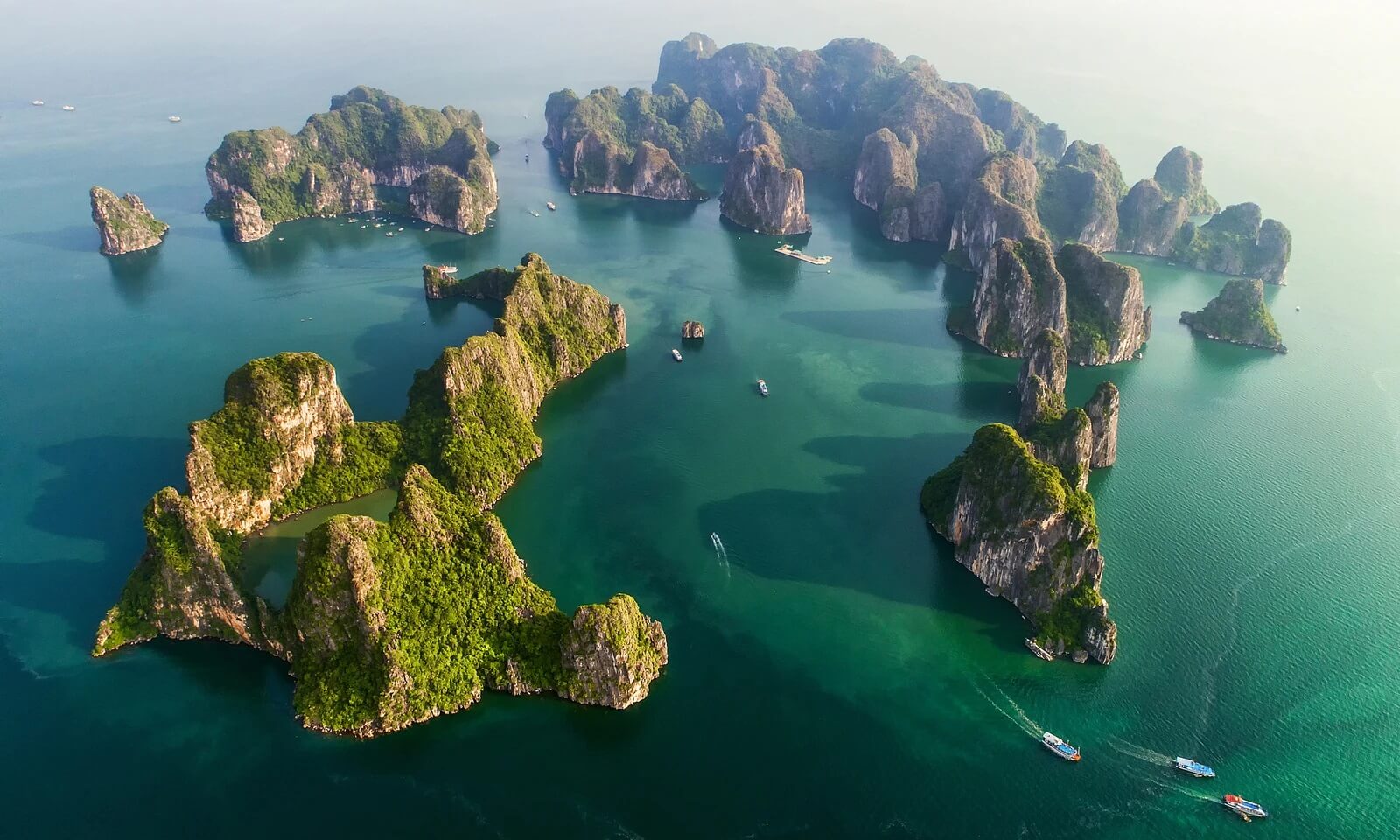
- On 08/01/2024
- In Blogs Travel Tips
- Tags:
Beautiful UNESCO World Heritage Sites
By Caitlin Morton and Jessica Puckett, Condé Nast Traveler | UNESCO | Wikipedia Medias
There are 1199 UNESCO World Heritage Sites, with more properties being added to the list every couple of years. In 2023 alone, there were a total of 42 new properties inscribed by the organization. All have been determined to represent outstanding cultural or natural value to humanity.
Those criteria make for some breathtaking sites around the world, from medieval walled cities in Europe and Incan ruins in South America to ancient temples in Asia and African savannas teeming with wildlife. In fact, there are World Heritage Sites on every continent (except Antarctica) as well as some of the most remote areas of the globe (think: isolated islands and the farther reaches of the Polar Region). Each one is magnificent in its own way—many have unique ecosystems that are home to rare species or contain an important link to the first iterations of human history. Although, scenery-wise, some sites simply outshine the rest.
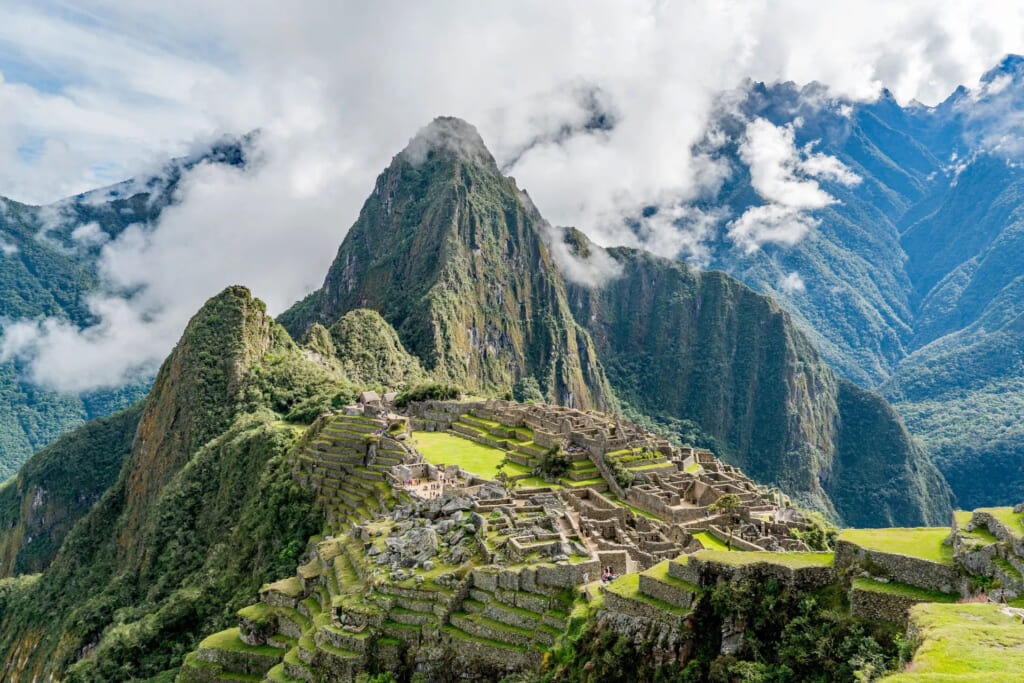
Machu Picchu, Peru
While the intricate stone ruins of Machu Picchu are the work of 15th-century Inca rulers, not Mother Nature, it's the site's natural setting that makes it so alluring. Perched atop the flattened peak of a mountain, the ancient Wonder of the World benefits from the famous backdrop of Huayna Picchu, lush green surfaces, and a barrier of Andean peaks that, despite the landmark's fame, makes you feel like you've stumbled upon a secret.
Machu Picchu stands 2430 m above sea-level, in the middle of a tropical mountain forest, in an extraordinarily beautiful setting. It was probably the most amazing urban creation of the Inca Empire at its height; its giant walls, terraces and ramps seem as if they have been cut naturally in the continuous rock escarpments. The natural setting, on the eastern slopes of the Andes, encompasses the upper Amazon basin with its rich diversity of flora and fauna.
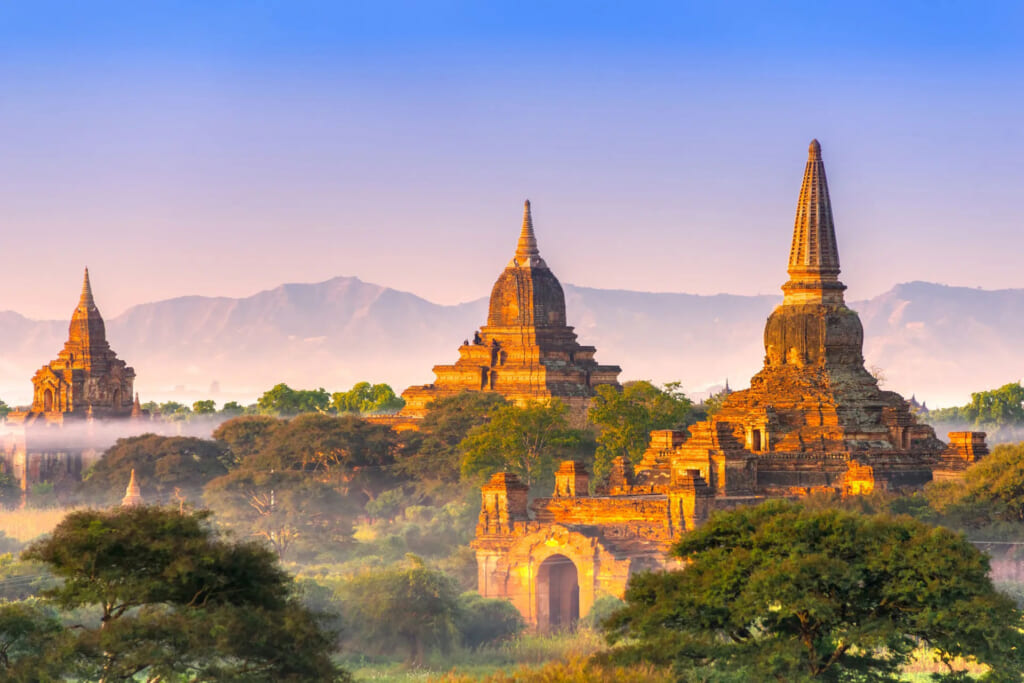
Bagan, Myanmar
One of the most recognizable sacred sites on earth, Bagan features an exceptional range of Buddhist art and architecture, including temples, monasteries, frescoes, and sculptures. Don't forget to visit Shwesandaw Pagoda (one of the most famous of the more than 2000 ancient temples and shrines that remain) to take in the views of the sunset.
Lying on a bend of the Ayeyarwady River in the central plain of Myanmar, Bagan is a sacred landscape, featuring an exceptional range of Buddhist art and architecture. The seven components of the serial property include numerous temples, stupas, monasteries and places of pilgrimage, as well as archaeological remains, frescoes and sculptures. The property bears spectacular testimony to the peak of Bagan civilization when the site was the capital of a regional empire. This ensemble of monumental architecture reflects the strength of religious devotion of an early Buddhist empire.
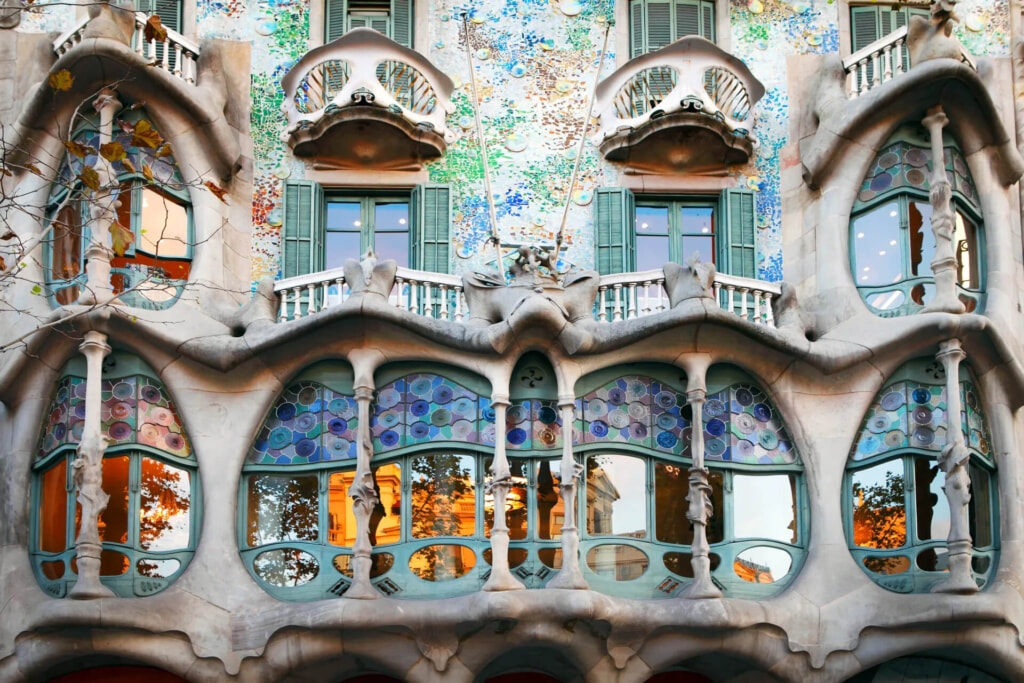
Works of Antoni Gaudí, Spain
Antoni Gaudí may not have been from Barcelona by birth (he was actually from Reus, about an hour and a half away), but his buildings put the city on the map: the otherworldly towers of La Sagrada Familia, the colour-splattered mosaics of Park Güell, and the impressionist-like florals of Casa Batlló.
Seven properties built by the architect Antoni Gaudí (1852–1926) in or near Barcelona testify to Gaudí’s exceptional creative contribution to the development of architecture and building technology in the late 19th and early 20th centuries. These monuments represent an eclectic, as well as a very personal, style which was given free reign in the design of gardens, sculpture and all decorative arts, as well as architecture. The seven buildings are: Parque Güell; Palacio Güell; Casa Mila; Casa Vicens; Gaudí’s work on the Nativity façade and Crypt of La Sagrada Familia; Casa Batlló; Crypt in Colonia Güell.
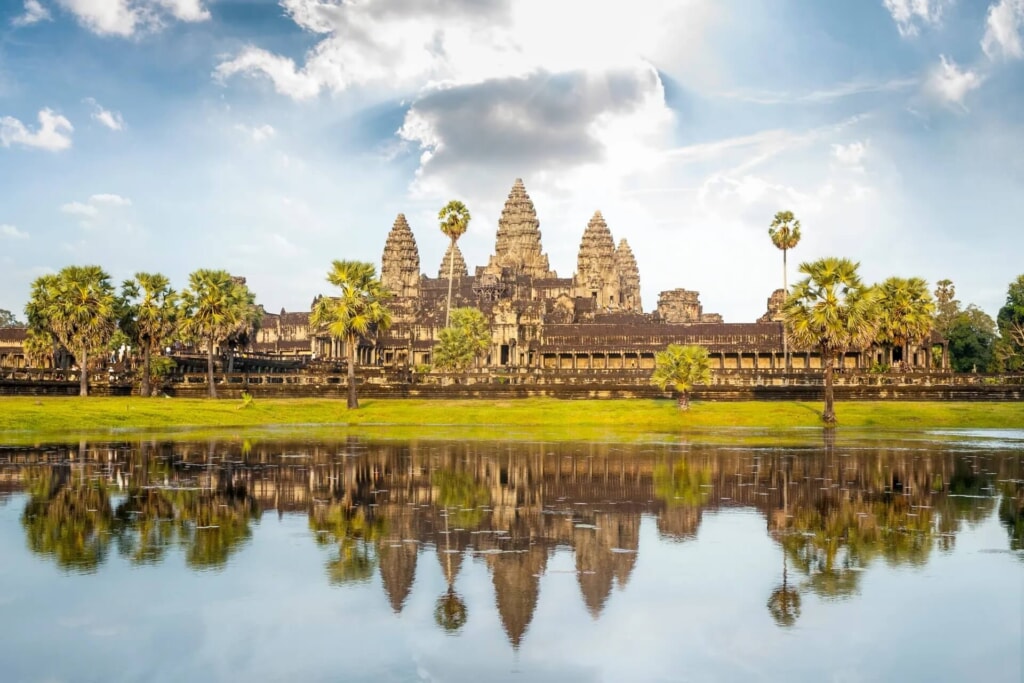
Angkor Wat, Cambodia
Angkor Archaeological Park comprises 12 main temples and scores of smaller structures, but the biggest and most important temple, the 12th-century Angkor Wat, is the star due to its trove of art and immense size: an area of nearly 99,000 acres, including forests.
Angkor is one of the most important archaeological sites in South-East Asia. Stretching over some 400 km2, including forested area, Angkor Archaeological Park contains the magnificent remains of the different capitals of the Khmer Empire, from the 9th to the 15th century. They include the famous Temple of Angkor Wat and, at Angkor Thom, the Bayon Temple with its countless sculptural decorations. UNESCO has set up a wide-ranging programme to safeguard this symbolic site and its surroundings.
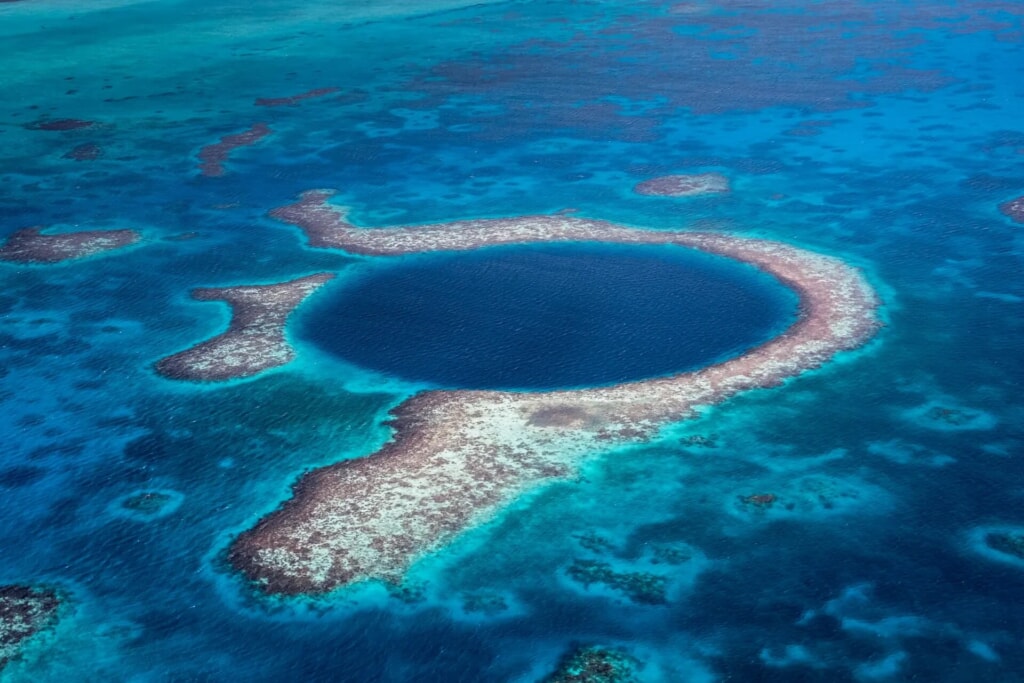
Belize Barrier Reef
Offering some of the best scuba diving in the world, the Belize Barrier Reef Reserve System is an important habitat for scores of threatened marine species, including the West Indian manatee and several varieties of sea turtles, as well as rare endemic and migratory birds that reproduce in its coastal areas.
The coastal area of Belize is an outstanding natural system consisting of the largest barrier reef in the northern hemisphere, offshore atolls, several hundred sand cays, mangrove forests, coastal lagoons and estuaries. The system’s seven sites illustrate the evolutionary history of reef development and are a significant habitat for threatened species, including marine turtles, manatees and the American marine crocodile.
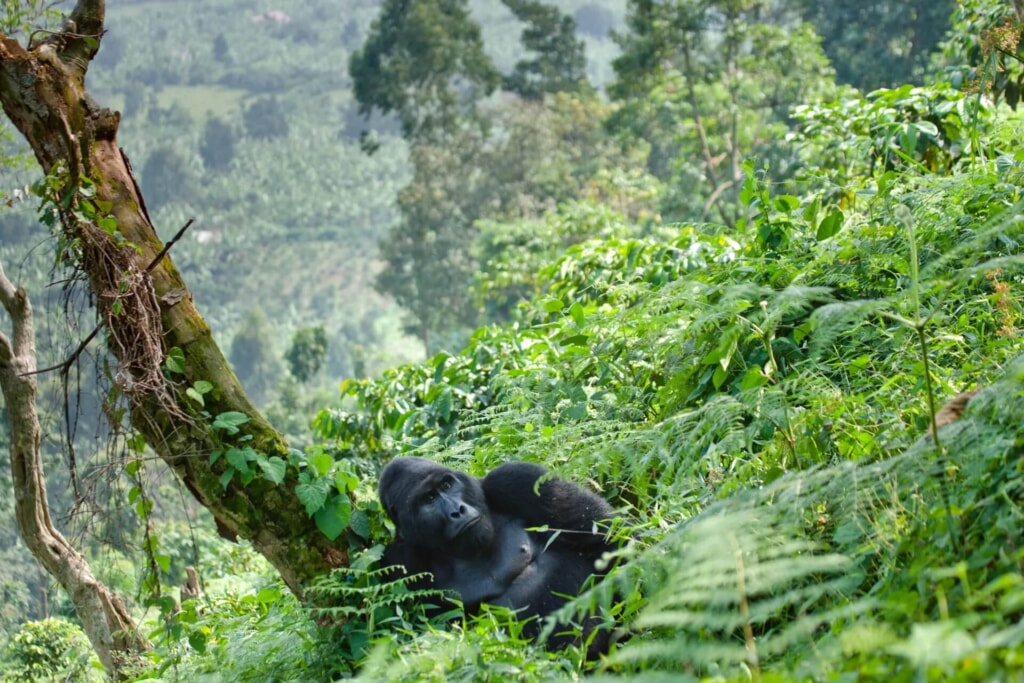
Bwindi Impenetrable National Park, Uganda
One of the world's best places for gorilla trekking, Bwindi Impenetrable National Park occupies 124 square miles in southwestern Uganda. As the name suggests, hacking through the park's tangled undergrowth and thick tree canopy isn't an easy day's work—but it'll feel like you have the jungle pretty much to yourself.
Located in south-western Uganda, at the junction of the plain and mountain forests, Bwindi Park covers 32,000 ha and is known for its exceptional biodiversity, with more than 160 species of trees and over 100 species of ferns. Many types of birds and butterflies can also be found there, as well as many endangered species, including the mountain gorilla.
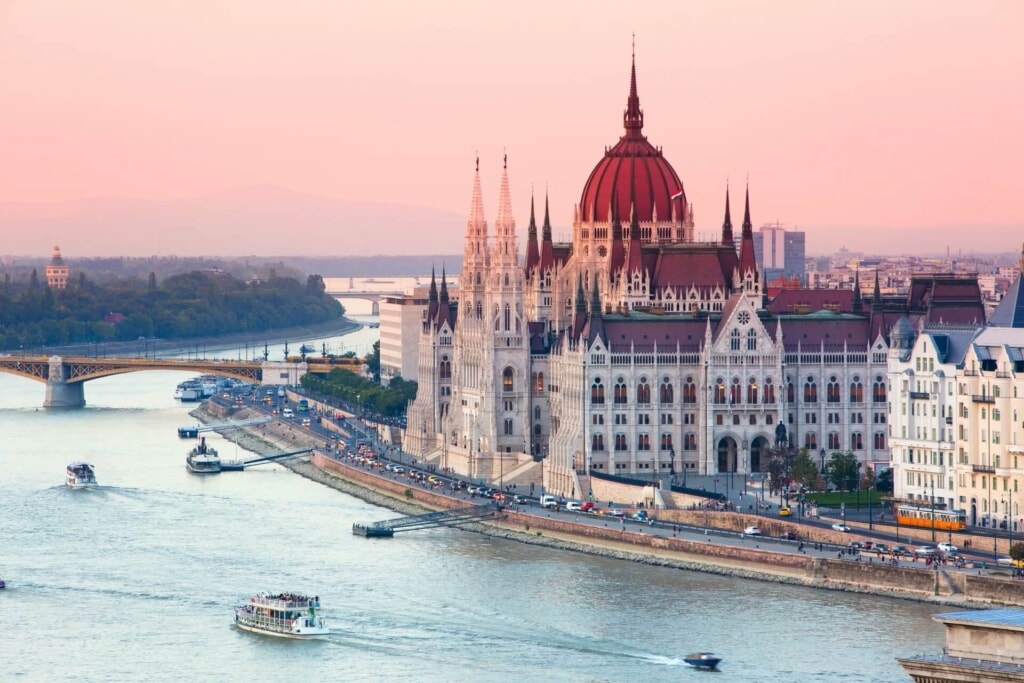
Budapest (Banks of the Danube), Hungary
The central stretch of Budapest illustrates great periods of Hungarian history via stunning architecture, including such masterpieces as the Parliament (pictured), Opera House, the Hungarian Academy of Sciences, and the Market Hall.
This site has the remains of monuments such as the Roman city of Aquincum and the Gothic castle of Buda, which have had a considerable influence on the architecture of various periods. It is one of the world's outstanding urban landscapes and illustrates the great periods in the history of the Hungarian capital.
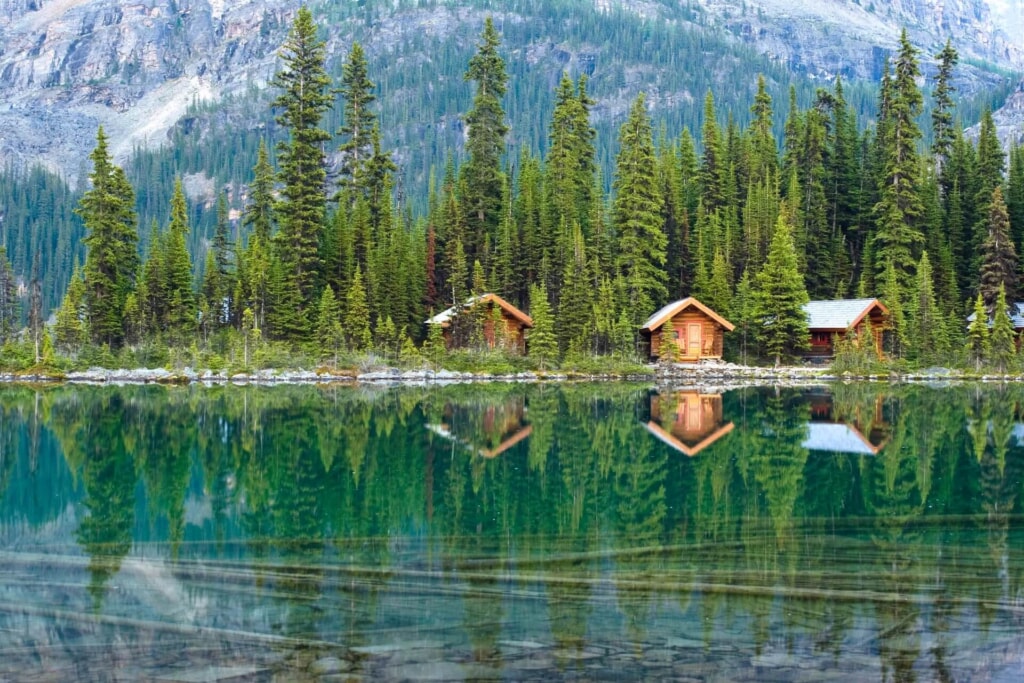
Canadian Rocky Mountain Parks, Canada
Consisting of national parks Banff, Jasper, Kootenay, and Yoho, the Canadian Rocky Mountain Parks showcase both the country's scenic beauty and ecological importance (you'll find some important fossil sites here). The region's 8,877 square miles are studded with mountain peaks, glaciers, lakes, waterfalls, canyons, and limestone caves.
The contiguous national parks of Banff, Jasper, Kootenay and Yoho, as well as the Mount Robson, Mount Assiniboine and Hamber provincial parks, studded with mountain peaks, glaciers, lakes, waterfalls, canyons and limestone caves, form a striking mountain landscape. The Burgess Shale fossil site, well known for its fossil remains of soft-bodied marine animals, is also found there.
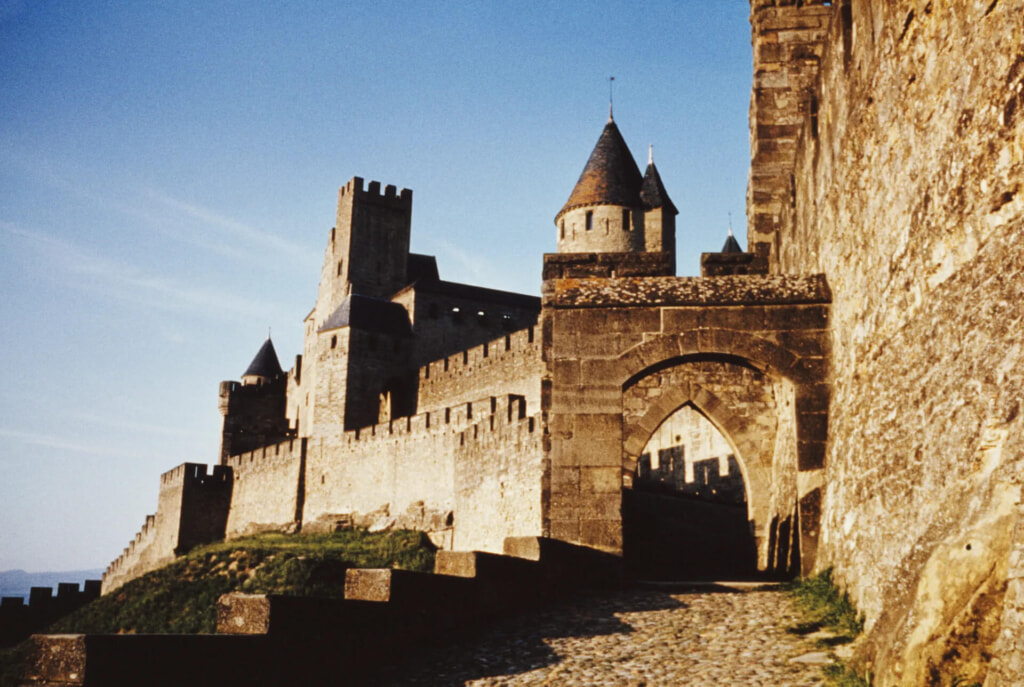
The Fortified City of Carcassonne, France
To visit the medieval city of Carcassonne is to walk into the pages of a storybook. The walled hilltop city has ramparts, towers, and turrets befitting a castle from a fairytale. Along with the chateaux of the Old Town, tourists will also find plenty of charming cafés within the historic city's walls.
Since the pre-Roman period, a fortified settlement has existed on the hill where Carcassonne now stands. In its present form it is an outstanding example of a medieval fortified town, with its massive defences encircling the castle and the surrounding buildings, its streets and its fine Gothic cathedral. Carcassonne is also of exceptional importance because of the lengthy restoration campaign undertaken by Viollet-le-Duc, one of the founders of the modern science of conservation.
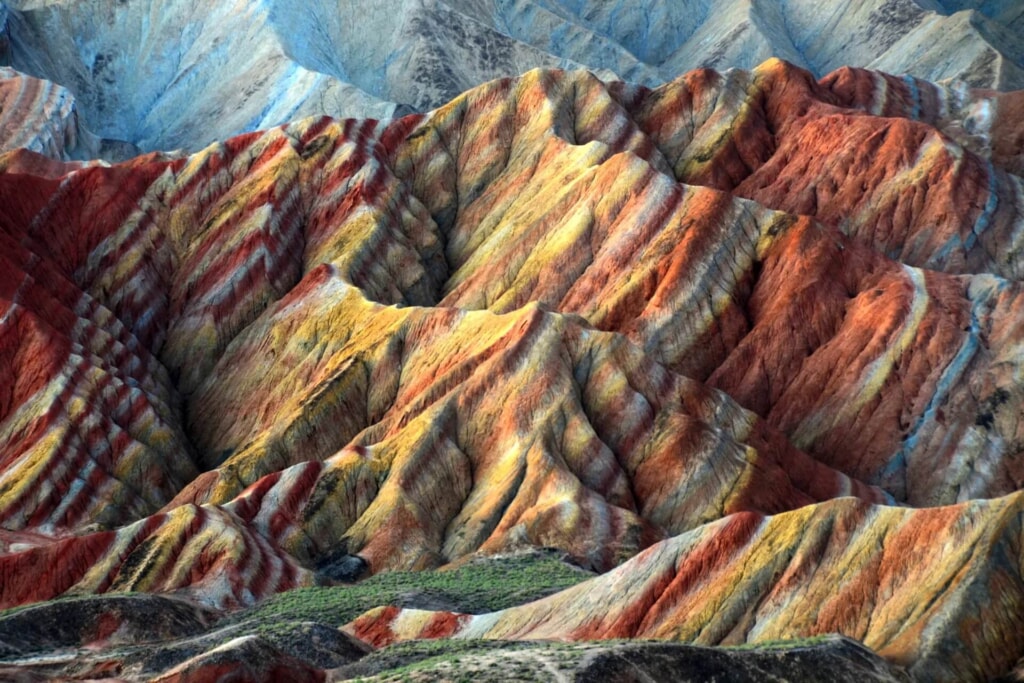
Danxia Landform, China
These striped, colourful mountains are Mother Nature's answer to Photoshop. Red sandstone and mineral deposits have been building up in China's Danxia Landform Geological Park for more than 20 million years, causing the surreal layered effect.
China Danxia is the name given in China to landscapes developed on continental red terrigenous sedimentary beds influenced by endogenous forces (including uplift) and exogenous forces (including weathering and erosion). The inscribed site comprises six areas found in the sub-tropical zone of south-west China. They are characterized by spectacular red cliffs and a range of erosional landforms, including dramatic natural pillars, towers, ravines, valleys and waterfalls. These rugged landscapes have helped to conserve sub-tropical broad-leaved evergreen forests, and host many species of flora and fauna, about 400 of which are considered rare or threatened.
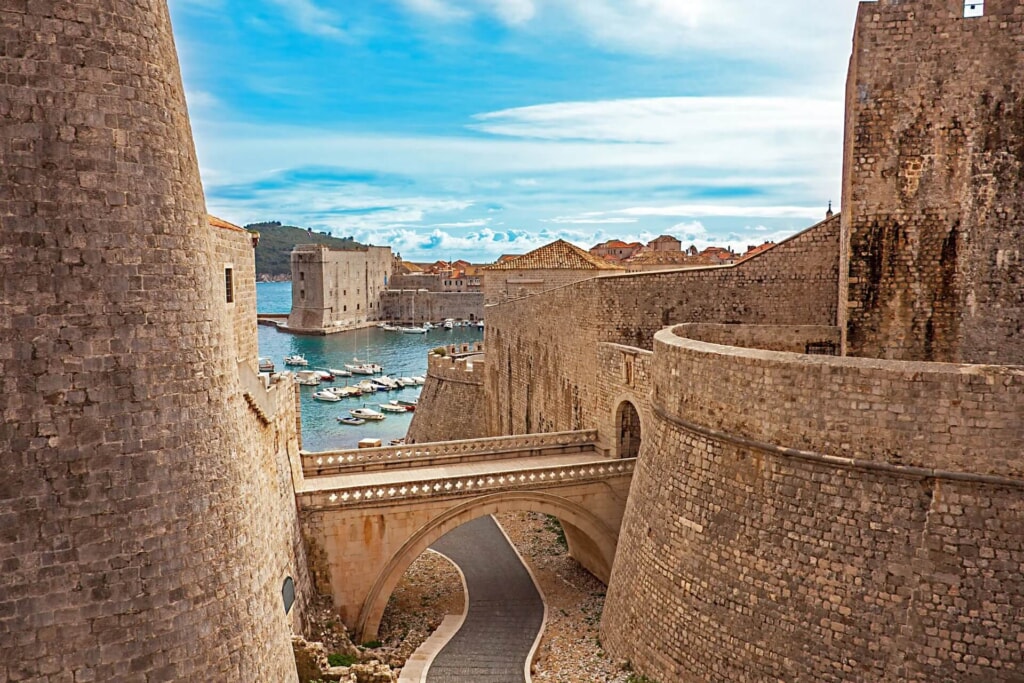
Old City of Dubrovnik, Croatia
Whether you know it as King's Landing or simply one of the world's most beautiful cities, there's no denying the appeal of Dubrovnik. We suggest getting on top of the surrounding walls to take in the city—they stretch completely around the Old Town, and you can walk their entire 1.2-mile length.
The 'Pearl of the Adriatic', situated on the Dalmatian coast, became an important Mediterranean sea power from the 13th century onwards. Although severely damaged by an earthquake in 1667, Dubrovnik managed to preserve its beautiful Gothic, Renaissance and Baroque churches, monasteries, palaces and fountains. Damaged again in the 1990s by armed conflict, it is now the focus of a major restoration programme co-ordinated by UNESCO.
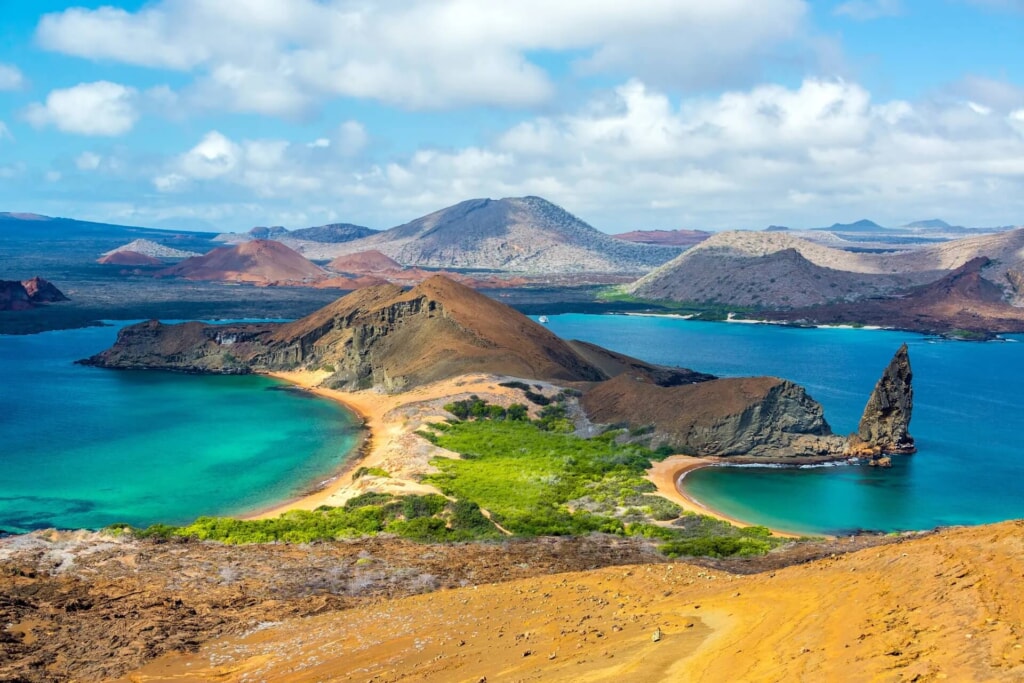
Galápagos Islands, Ecuador
Do we really have to explain the allure of the Galápagos? If you can, make your next travel goal to visit this of-another-time stretch of Ecuador, with dinosaur-like giant tortoises lumbering through the tall grass and real-life blue-footed boobies.
Situated in the Pacific Ocean some 1,000 km from the South American continent, these 19 islands and the surrounding marine reserve have been called a unique ‘living museum and showcase of evolution’. Located at the confluence of three ocean currents, the Galápagos are a ‘melting pot’ of marine species. Ongoing seismic and volcanic activity reflects the processes that formed the islands. These processes, together with the extreme isolation of the islands, led to the development of unusual animal life – such as the land iguana, the giant tortoise and the many types of finch – that inspired Charles Darwin’s theory of evolution by natural selection following his visit in 1835.
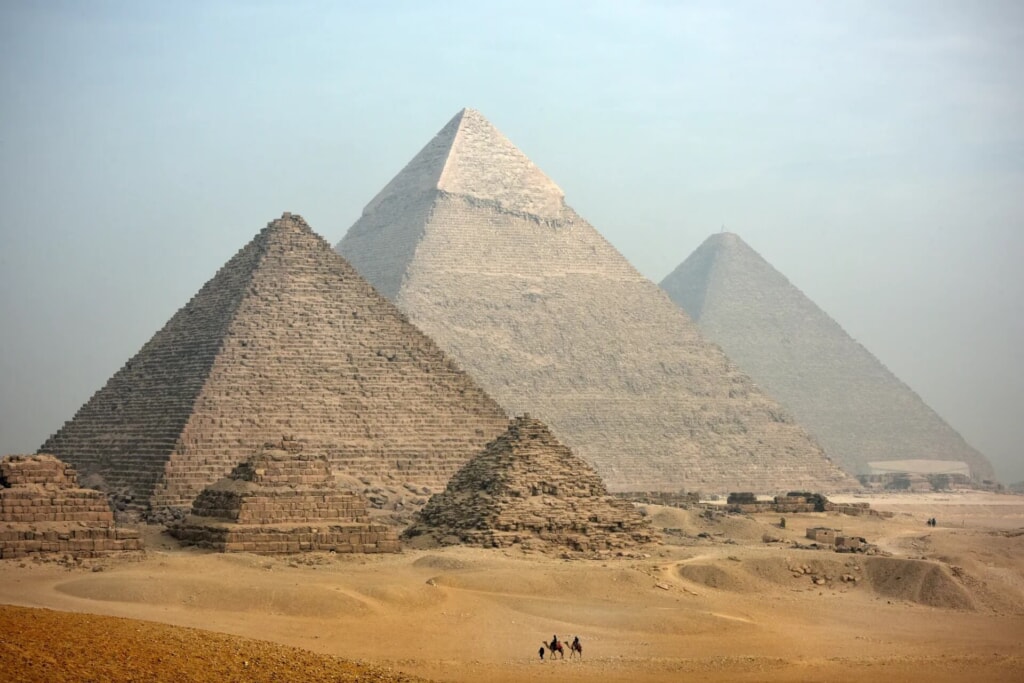
Pyramids of Giza, Egypt
There’s a reason tourists swarm the Giza pyramid complex in Egypt: The Great Pyramid is ranked as one of Seven Wonders of the World, and dates back 4500 years. The iconic monuments are part of the pyramid fields of Memphis (the first Capital of Ancient Egypt), which UNESCO recognizes for its political and architectural significance.
Memphis and its Necropolis – the Pyramid Fields from Giza to Dahshur: The capital of the Old Kingdom of Egypt has some extraordinary funerary monuments, including rock tombs, ornate mastabas, temples and pyramids. In ancient times, the site was considered one of the Seven Wonders of the World.
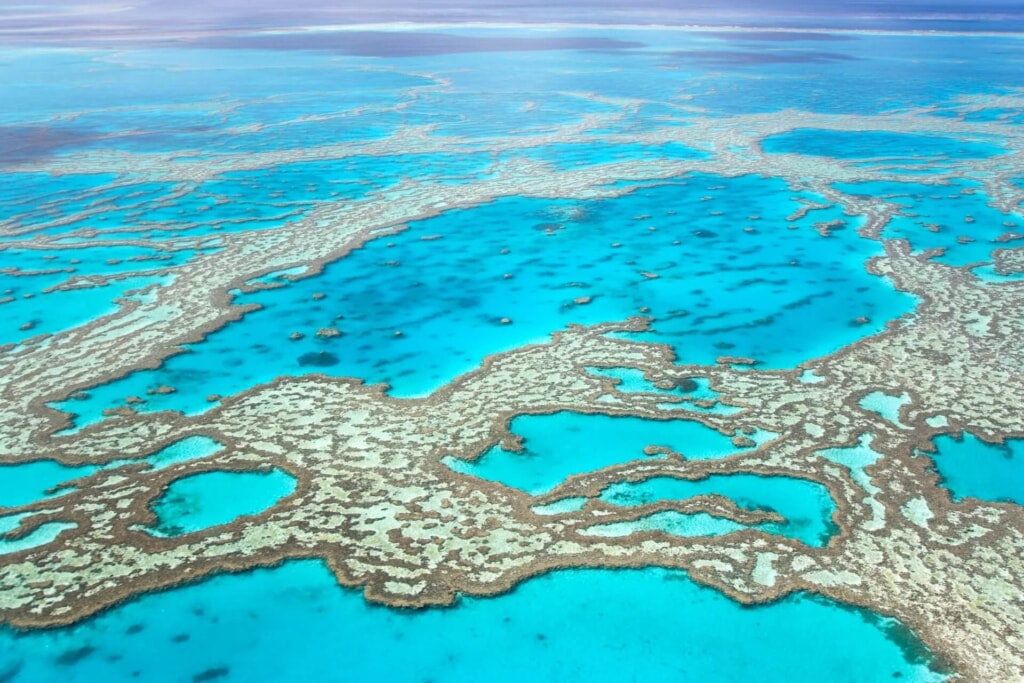
Great Barrier Reef, Australia
Although the Great Barrier Reef—the largest living thing on Earth—can be seen from space, the best vantage point belongs to the avid snorkelers and scuba divers who visit each year. If you must resurface, do it at the Whitsundays—namely Whitehaven Beach, often considered to be one of the world's most beautiful beaches.
The Great Barrier Reef is a site of remarkable variety and beauty on the north-east coast of Australia. It contains the world’s largest collection of coral reefs, with 400 types of coral, 1500 species of fish and 4000 types of mollusc. It also holds great scientific interest as the habitat of species such as the dugong (‘sea cow’) and the large green turtle, which are threatened with extinction.
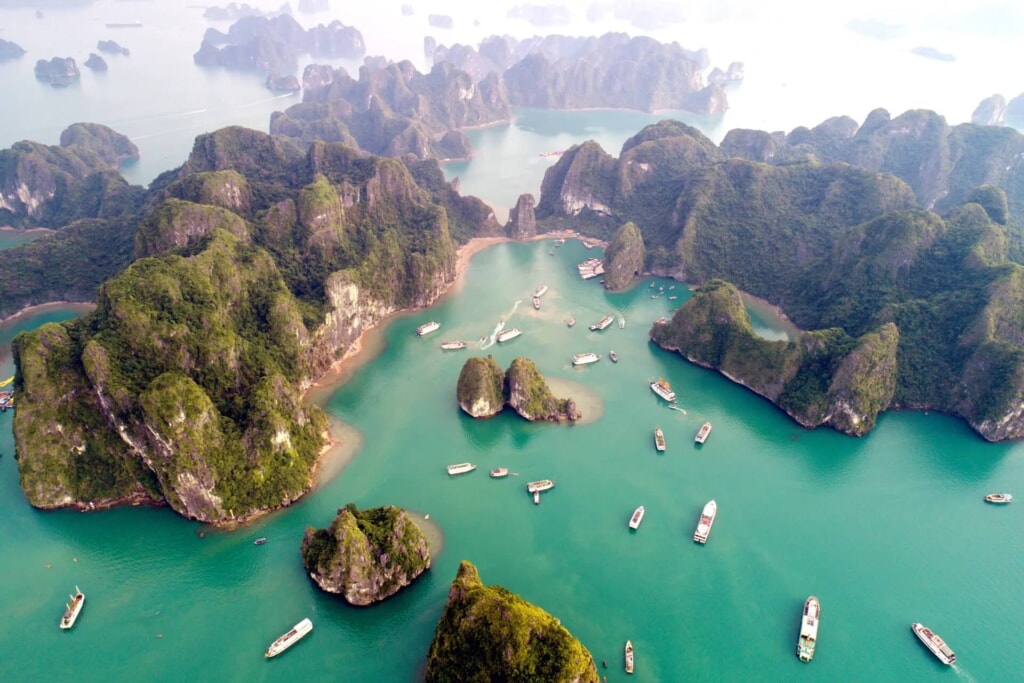
Ha Long Bay, Vietnam
Ha Long Bay, located in northeast Vietnam, is beloved for its blue waters and spread of limestone islands, all occupied by tropical trees and wildlife. Board a boat to experience the beauty—and associated myths and stories—of the mist-shrouded emerald basin for yourself.
Ha Long Bay, in the Gulf of Tonkin, includes some 1600 islands and islets featuring spectacular limestone pillars rising from the sea, the eroded notches, arches and caves creating a picturesque and beautiful landscape. Because of their precipitous nature, most of the islands are uninhabited and unaffected by a human presence. Seven key ecosystem types are found here and the area is home to threatened endemic species such as the Cat Ba Langur (Trachypithecus poliocephalus), the Cat Ba Tiger Gecko (Goniurosaurus Catbaensis), and the Asian Small-clawed Otter (Aonyx cinerea). The site's outstanding scenic beauty is complemented by its great biological interest.
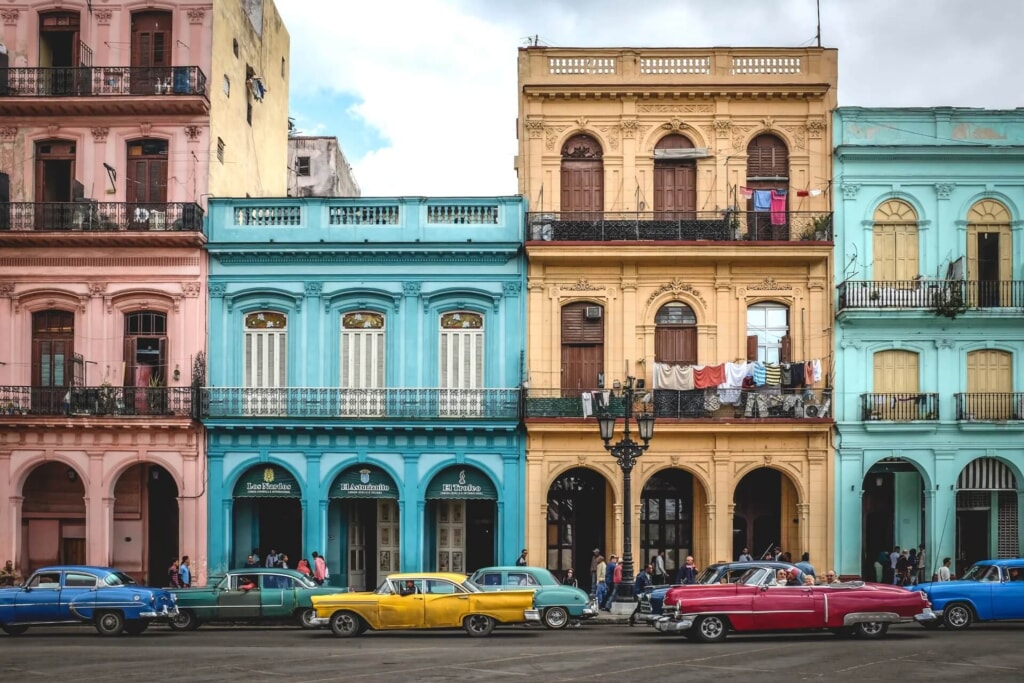
Old Havana, Cuba
This central neighbourhood, known for its historic plazas and narrow cobblestone streets that date back more than 500 years, is what most people picture when they think of Cuba. Its array of colorful buildings—with facades painted in Caribbean blues, pinks, and yellows—display a mix of architectural styles, including Neoclassical and Art Deco.
Havana was founded in 1519 by the Spanish. By the 17th century, it had become one of the Caribbean's main centres for ship-building. Although it is today a sprawling metropolis of two million inhabitants, its old centre retains an interesting mix of Baroque and neoclassical monuments, and a homogeneous ensemble of private houses with arcades, balconies, wrought-iron gates and internal courtyards.
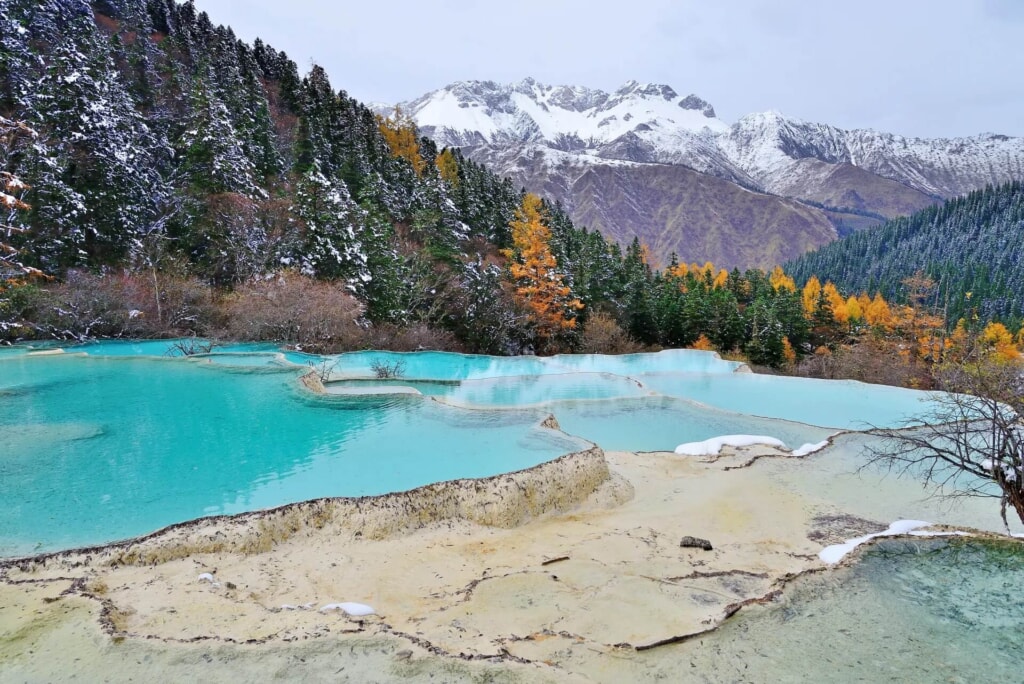
Huanglong Scenic Area, China
Situated in northwest Sichuan's Minshan mountain range, the Huanglong Scenic Area offers striking views of snowy mountain peaks set against forests, waterfalls, and hot springs. But its best known for its ultra-blue travertine lakes, created by the region's breathtaking limestone formations, that UNESCO says are unique in all of Asia.
Situated in the north-west of Sichaun Province, the Huanglong valley is made up of snow-capped peaks and the easternmost of all the Chinese glaciers. In addition to its mountain landscape, diverse forest ecosystems can be found, as well as spectacular limestone formations, waterfalls and hot springs. The area also has a population of endangered animals, including the giant panda and the Sichuan golden snub-nosed monkey.
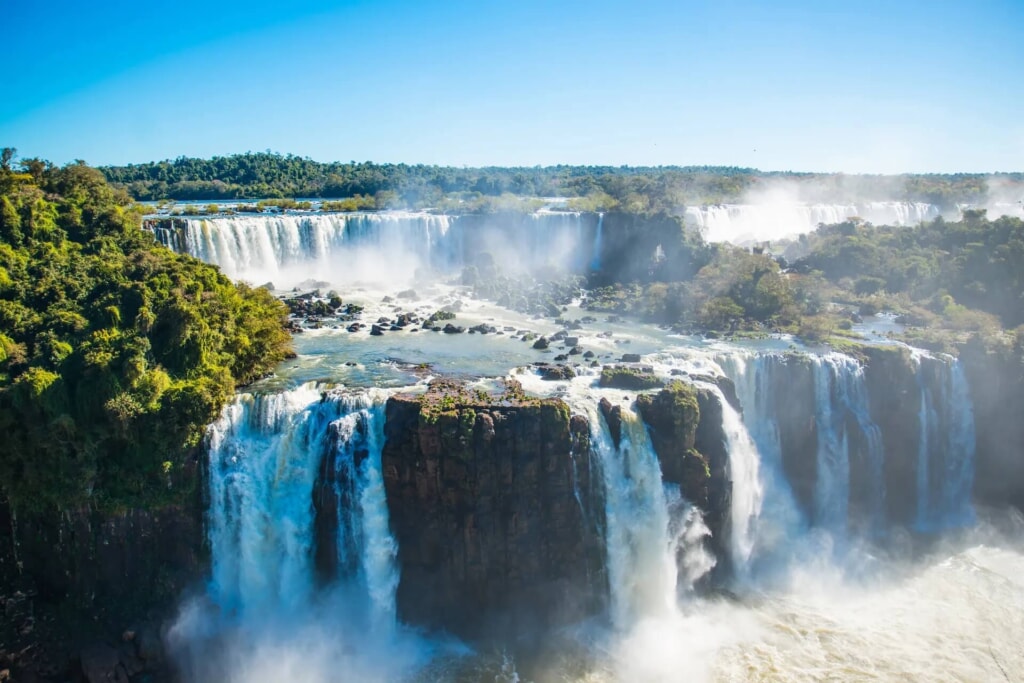
Iguazu National Park, Argentina
On the Argentina-Brazil border, Iguazú Falls in the subtropical north consists of 200 falls reaching heights of 200 feet, making it one of the most stunning sites in the world, both visually and acoustically (those waters are loud).
The semicircular waterfall at the heart of this site is some 80 m high and 2700 m in diameter and is situated on a basaltic line spanning the border between Argentina and Brazil. Made up of many cascades producing vast sprays of water, it is one of the most spectacular waterfalls in the world. The surrounding subtropical rainforest has over 2000 species of vascular plants and is home to the typical wildlife of the region: tapirs, giant anteaters, howler monkeys, ocelots, jaguars and caymans.
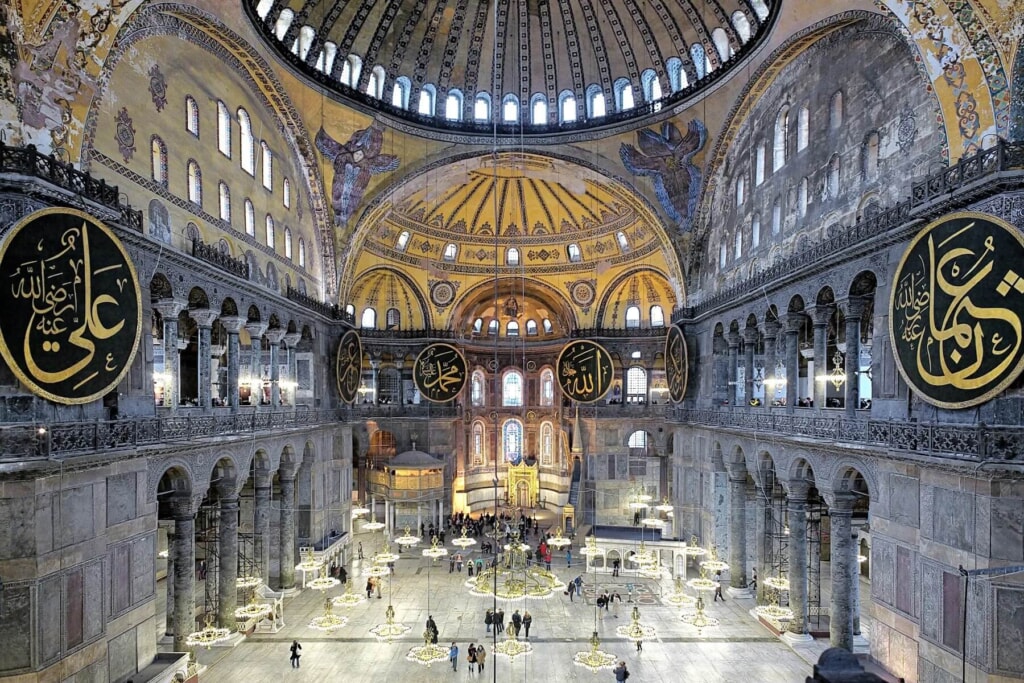
Historic Areas of Istanbul, Turkey
UNESCO lauds Istanbul for its “incomparable skyline,” formed by the genius of Byzantine and Ottoman architects over the past 2,000 years. Don't miss the massive domes, colored mosaics, minarets, and Islamic calligraphy at such sites as the Blue Mosque and Hagia Sophia.
With its strategic location on the Bosphorus peninsula between the Balkans and Anatolia, the Black Sea and the Mediterranean, Istanbul has been associated with major political, religious and artistic events for more than 2,000 years. Its masterpieces include the ancient Hippodrome of Constantine, the 6th-century Hagia Sophia and the 16th-century Süleymaniye Mosque, all now under threat from population pressure, industrial pollution and uncontrolled urbanization.
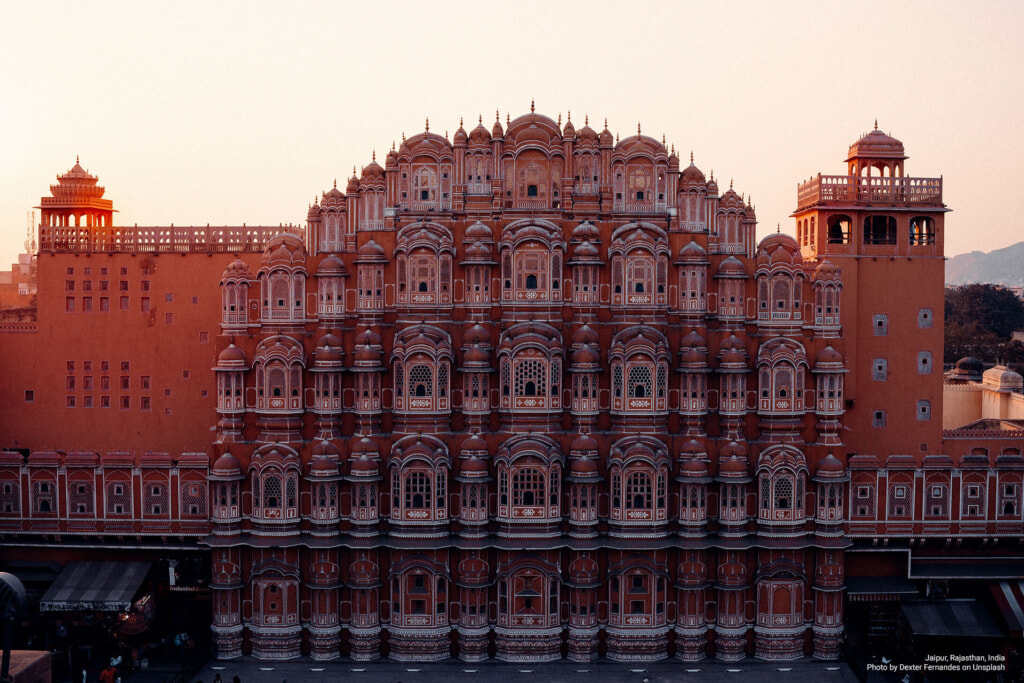
Jaipur City, India
Rajasthan's capital, a.k.a. the Pink City, isn't the kind of place to hide its true colors. The city’s maharaja, Sawai Ram Singh II, ordered the buildings be painted an orangey-pink color in 1876 for a royal visit from Prince Albert and Queen Victoria; many buildings in the city’s old town remain painted this colour today.
The walled city of Jaipur, in India’s north-western state of Rajasthan was founded in 1727 by Sawai Jai Singh II. Unlike other cities in the region located in hilly terrain, Jaipur was established on the plain and built according to a grid plan interpreted in the light of Vedic architecture. The streets feature continuous colonnaded businesses that intersect in the centre, creating large public squares called chaupars. Markets, shops, residences and temples built along the main streets have uniform facades.
The city's urban planning shows an exchange of ideas from ancient Hindu and early modern Mughal as well as Western cultures. The grid plan is a model that prevails in the West, while the organization of the different city sectors (chowkris) refers to traditional Hindu concepts. Designed to be a commercial capital, the city has maintained its local commercial, artisanal and cooperative traditions to this day.
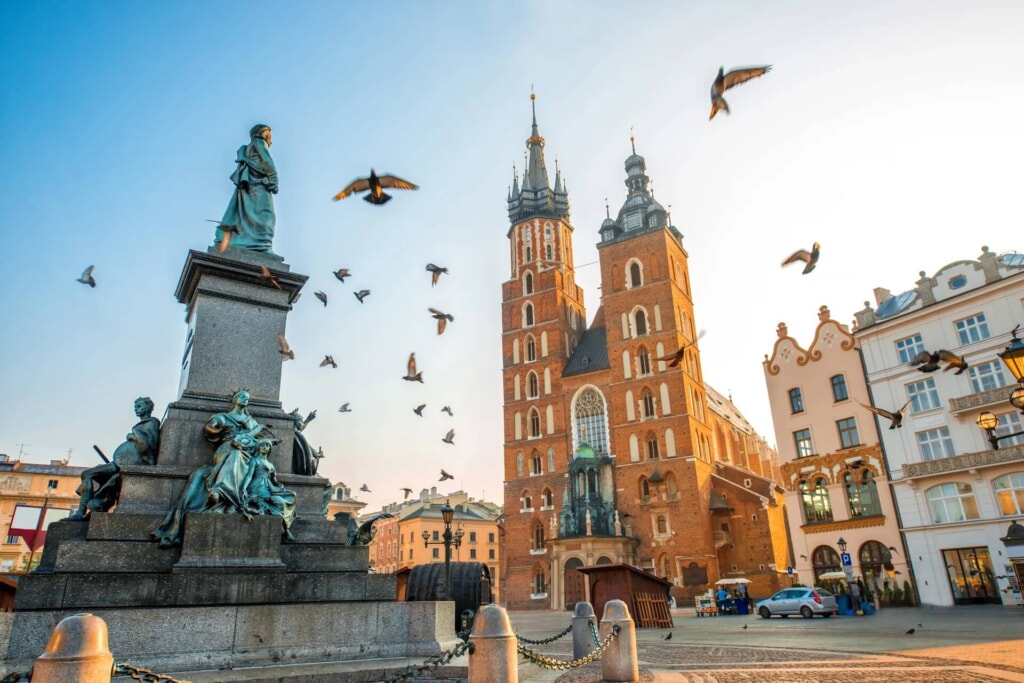
Historic Center of Krakow, Poland
It seems like every European city boasts a beautiful central square, but we'd argue that Krakow's Rynek Glówny ranks among the best. The square is defined by its 15th-century town hall tower (which you can, and should, climb), with the UNESCO-listed Wawel Castle just a short walk away.
The Historic Centre of Kraków, the former capital of Poland, is situated at the foot of the Royal Wawel Castle. The 13th-century merchants' town has Europe's largest market square and numerous historical houses, palaces and churches with their magnificent interiors. Further evidence of the town's fascinating history is provided by the remnants of the 14th-century fortifications and the medieval site of Kazimierz with its ancient synagogues in the southern part of town, Jagellonian University and the Gothic cathedral where the kings of Poland were buried.
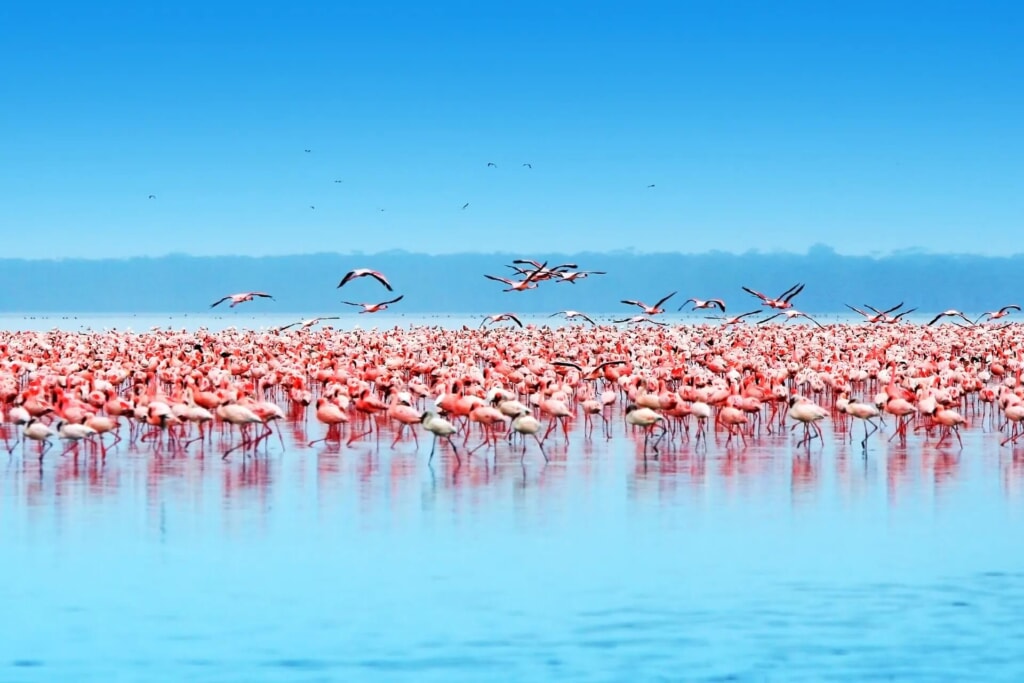
Lake Nakuru, Kenya
Part of the Kenya Lake System in the Great Rift Valley, Lake Nakuru is known for attracting lions, leopards, and swarms of feeding flamingos. Although rising water levels over the past few years have caused the number of pink birds to drop, the protected area is still a sight to behold, due to the diversity of wildlife it attracts.
The Kenya Lake System in the Great Rift Valley , a natural property of outstanding beauty, comprises three inter-linked relatively shallow lakes (Lake Bogoria, Lake Nakuru and Lake Elementaita) in the Rift Valley Province of Kenya and covers a total area of 32,034 hectares. The property is home to 13 globally threatened bird species and some of the highest bird diversities in the world. It is the single most important foraging site for the lesser flamingo anywhere, and a major nesting and breeding ground for great white pelicans. The property features sizeable mammal populations, including black rhino, Rothschild's giraffe, greater kudu, lion, cheetah and wild dogs and is valuable for the study of ecological processes of major importance.
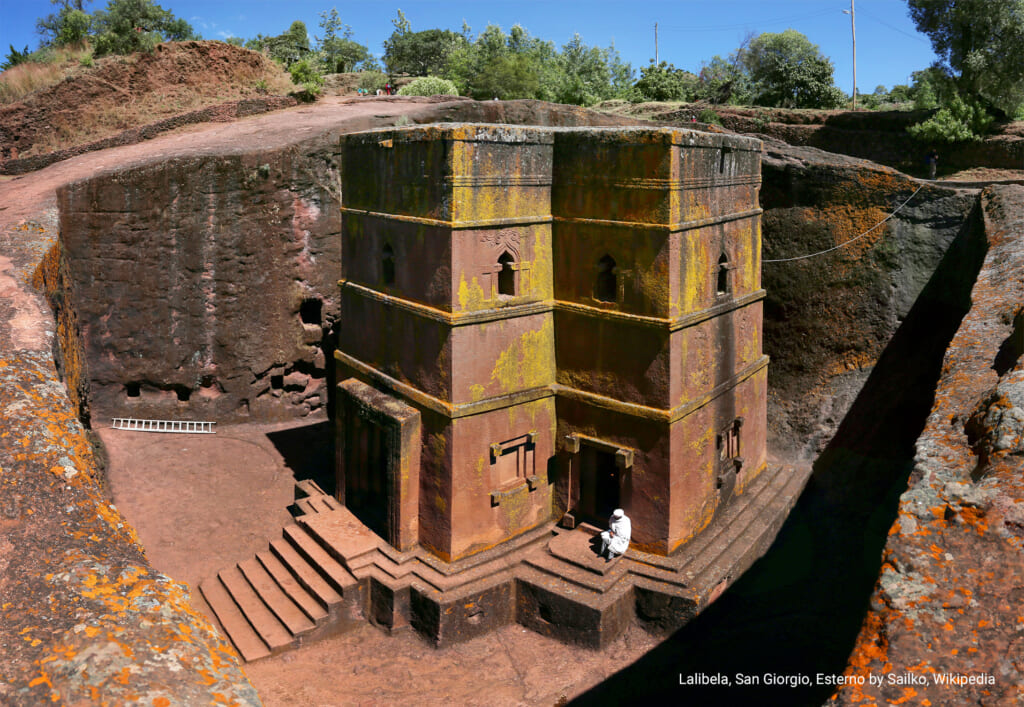
Rock-Hewn Churches of Lalibela, Ethiopia
In northern Ethiopia, the small town of Lalibela is renowned for its 11 medieval churches carved out of monolithic rock. The structures, complete with catacombs and ceremonial passages, are fascinating; the House of St. George, or Biete Ghiorgis (pictured), is particularly famous for its cross-shaped design and network of trenches, which connects it to the other churches.
The 11 medieval monolithic cave churches of this 13th-century 'New Jerusalem' are situated in a mountainous region in the heart of Ethiopia near a traditional village with circular-shaped dwellings. Lalibela is a high place of Ethiopian Christianity, still today a place of pilmigrage and devotion.
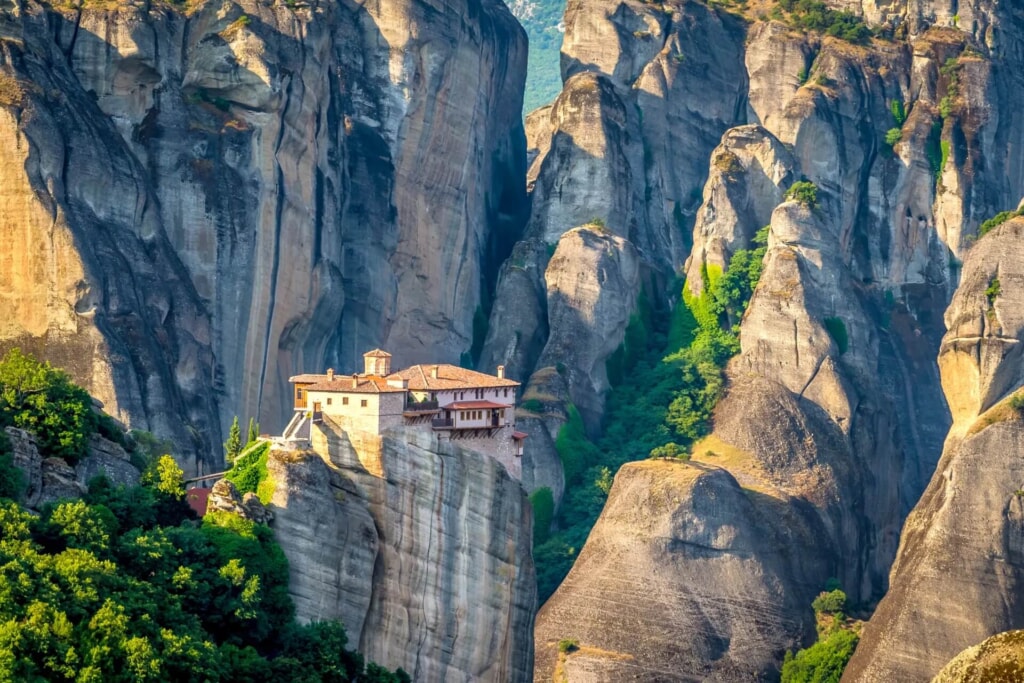
Meteora, Greece
As if still-standing monasteries from the 15th century weren't impressive enough, the buildings of Meteora are famously situated on almost inaccessible sandstone peaks in central Greece. Brave travelers can pay a visit to the Monastery of the Holy Trinity—one of six monasteries that are still standing—via a 140-step staircase cut into the side of the cliff.
In a region of almost inaccessible sandstone peaks, monks settled on these 'columns of the sky' from the 11th century onwards. Twenty-four of these monasteries were built, despite incredible difficulties, at the time of the great revival of the eremetic ideal in the 15th century. Their 16th-century frescoes mark a key stage in the development of post-Byzantine painting.
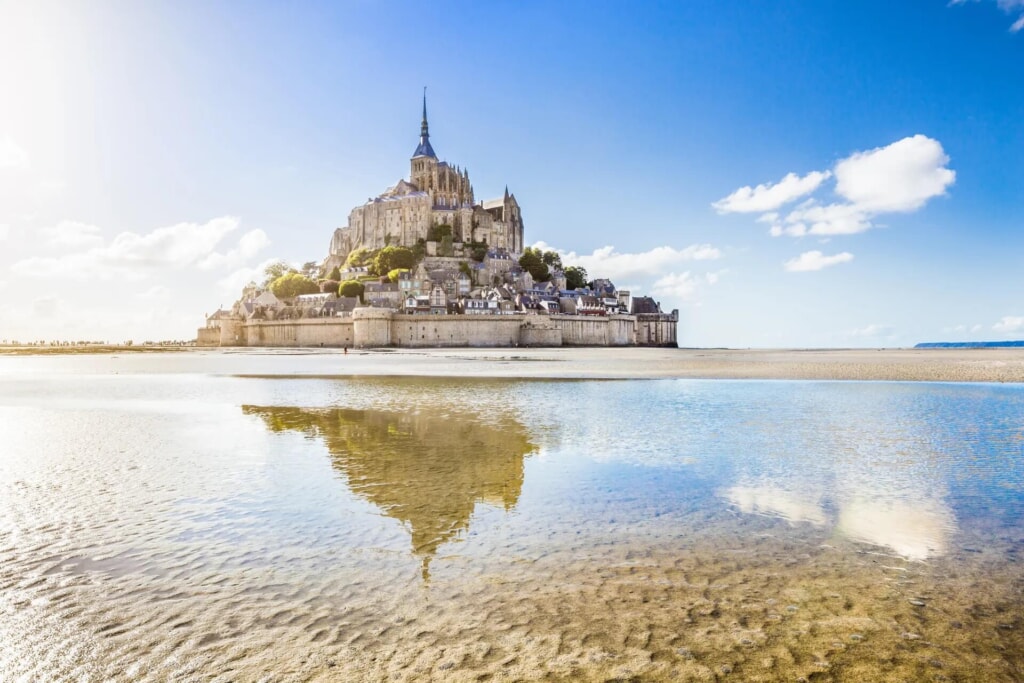
Mont Saint-Michel, France
Rising up from vast sandbanks and powerful tides, the rocky island of Mont Saint-Michel gives off an otherworldly appearance in its position off France's northwestern coast in Normandy. A small medieval village, complete with winding streets and tiny houses, sits on the island, but the crown jewel is undoubtedly the Abbey of Mont Saint-Michel, built in 708 A.D.
Perched on a rocky islet in the midst of vast sandbanks exposed to powerful tides between Normandy and Brittany stand the 'Wonder of the West', a Gothic-style Benedictine abbey dedicated to the archangel St Michael, and the village that grew up in the shadow of its great walls. Built between the 11th and 16th centuries, the abbey is a technical and artistic tour de force, having had to adapt to the problems posed by this unique natural site.
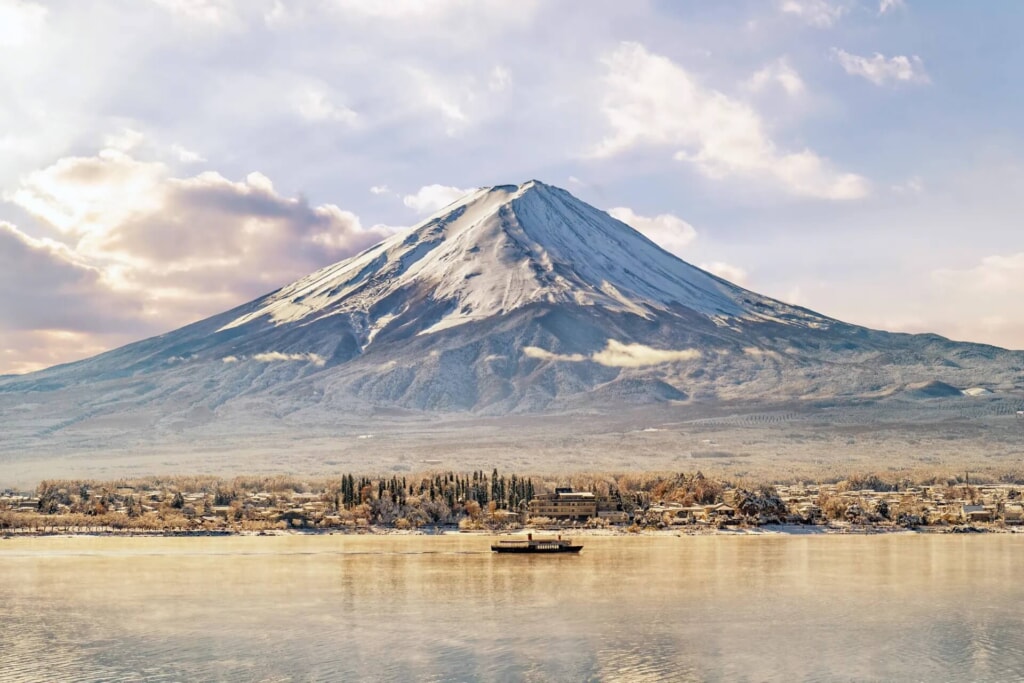
Mount Fuji, Japan
Mount Fuji is easily one of most beautiful places in Japan. Whether you see it framed with cherry blossoms in the spring or capped with snow and mist in the winter, the 12388-foot mountain will absolutely leave an impression.
he beauty of the solitary, often snow-capped, stratovolcano, known around the world as Mount Fuji, rising above villages and tree-fringed sea and lakes has long been the object of pilgrimages and inspired artists and poets. The inscribed property consists of 25 sites which reflect the essence of Fujisan’s sacred and artistic landscape. In the 12th century, Fujisan became the centre of training for ascetic Buddhism, which included Shinto elements.
On the upper 1500-metre tier of the 3776m mountain, pilgrim routes and crater shrines have been inscribed alongside sites around the base of the mountain including Sengen-jinja shrines, Oshi lodging houses, and natural volcanic features such as lava tree moulds, lakes, springs and waterfalls, which are revered as sacred. Its representation in Japanese art goes back to the 11th century, but 19th century woodblock prints of views, including those from sand beaches with pine tree groves have made Fujisan an internationally recognized icon of Japan and have had a deep impact on the development of Western art.
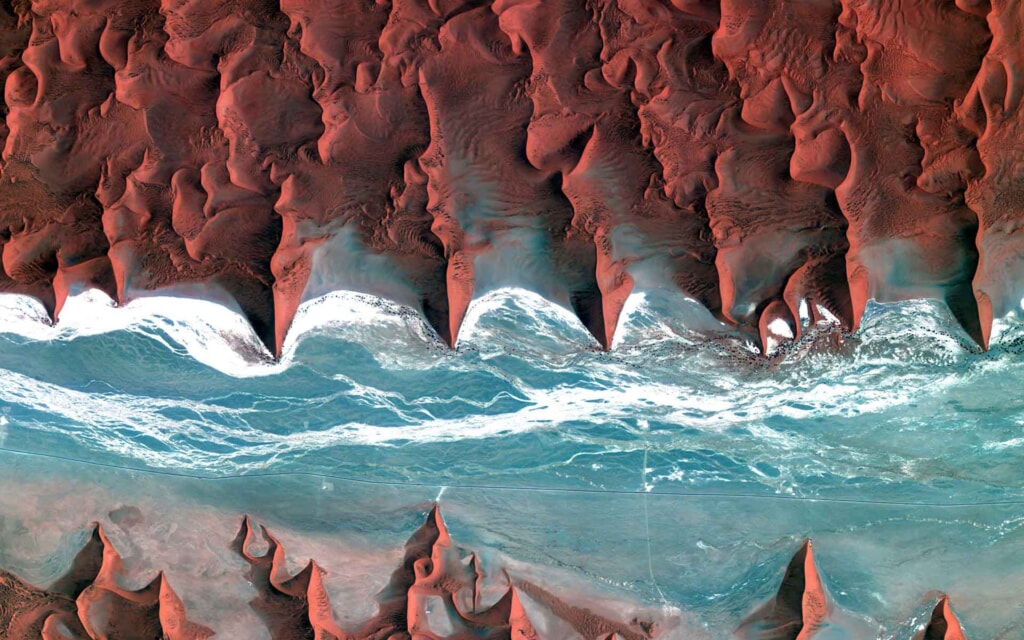
Namib Sand Sea, Namibia
The constantly changing conditions of the Namib Sand Sea render it a “landscape of exceptional beauty,” according to UNESCO. As fog rolls over this coastal desert region, ephemeral rivers spring up, creating astounding dunes and a unique ecosystem for the endemic mammals and reptiles that call the area home.
Namib Sand Sea is the only coastal desert in the world that includes extensive dune fields influenced by fog. Covering an area of over three million hectares and a buffer zone of 899,500 hectares, the site is composed of two dune systems, an ancient semi-consolidated one overlain by a younger active one. The desert dunes are formed by the transportation of materials thousands of kilometres from the hinterland, that are carried by river, ocean current and wind. It features gravel plains, coastal flats, rocky hills, inselbergs within the sand sea, a coastal lagoon and ephemeral rivers, resulting in a landscape of exceptional beauty. Fog is the primary source of water in the site, accounting for a unique environment in which endemic invertebrates, reptiles and mammals adapt to an ever-changing variety of microhabitats and ecological niches.
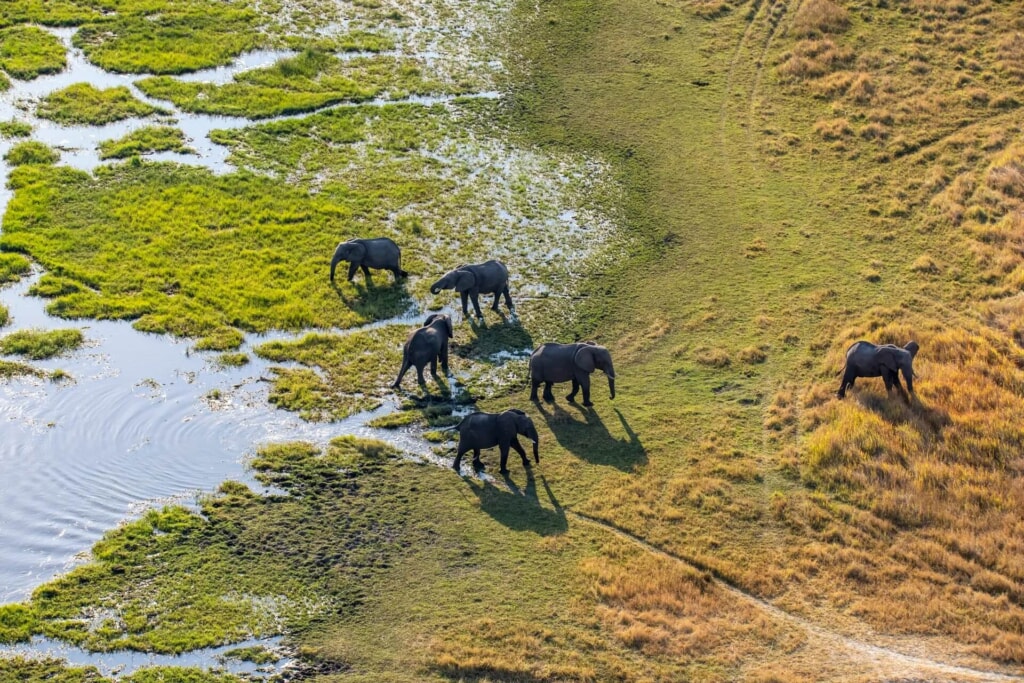
Okavango Delta, Botswana
The lush Okavango Delta—a 49-million acre river delta in northern Botswana—is like a real-world eden, where cheetahs, zebras, buffalo, and rhinos roam freely. Visit during Africa's winter (our summer), after the rains when the delta floods: The savanna’s grasses are low, while growth along the waterways attracts tons of wildlife.
This delta in north-west Botswana comprises permanent marshlands and seasonally flooded plains. It is one of the very few major interior delta systems that do not flow into a sea or ocean, with a wetland system that is almost intact. One of the unique characteristics of the site is that the annual flooding from the River Okavango occurs during the dry season, with the result that the native plants and animals have synchronized their biological cycles with these seasonal rains and floods. It is an exceptional example of the interaction between climatic, hydrological and biological processes. The Okavango Delta is home to some of the world’s most endangered species of large mammal, such as the cheetah, white rhinoceros, black rhinoceros, African wild dog and lion.
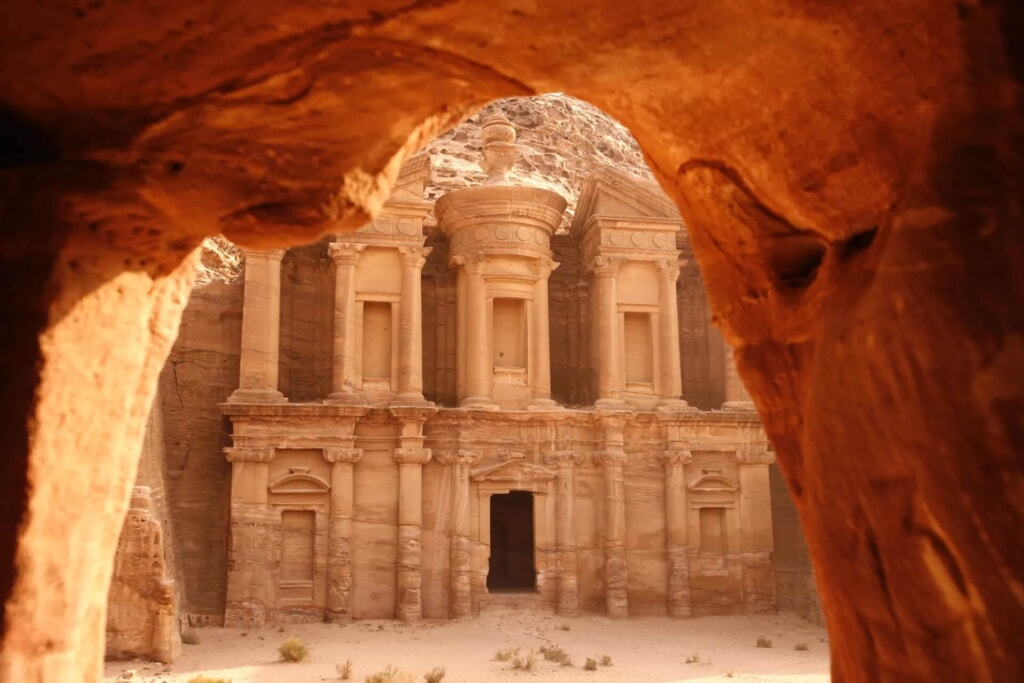
Petra, Jordan
This unfathomable 147-foot-tall facade chiseled into Jordan's mountainside is all the more remarkable when you learn that it dates back to the first century B.C. The site is one of the world's richest and largest archaeological sites, all set in a dominating red sandstone landscape.
Inhabited since prehistoric times, this Nabataean caravan-city, situated between the Red Sea and the Dead Sea, was an important crossroads between Arabia, Egypt and Syria-Phoenicia. Petra is half-built, half-carved into the rock, and is surrounded by mountains riddled with passages and gorges. It is one of the world's most famous archaeological sites, where ancient Eastern traditions blend with Hellenistic architecture.
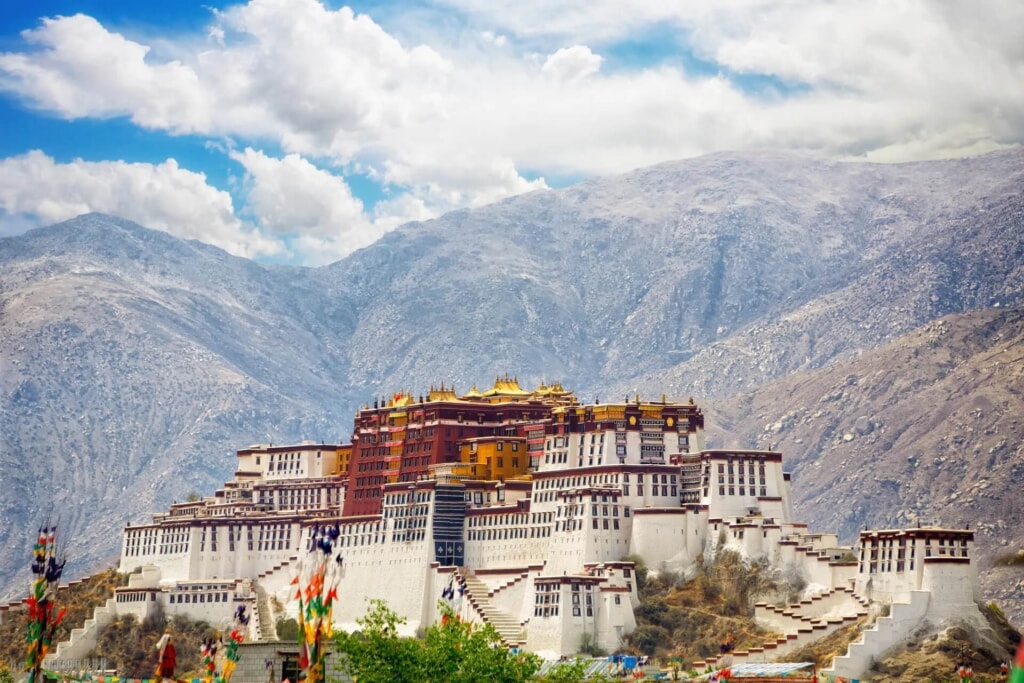
Potala Palace, Tibet
Once the home to the Dalai Lama, this towering 17th-century structure now functions as a state museum. The massive palace has 13 stories and more than 1,000 rooms, as well as centuries-old shrines. For those willing to ascend the 12,000-foot climb, the main payoff will be the complex's otherworldly Red Palace, filled with murals, bejeweled stupas, and tombs of past Dalai Lamas.
The Potala Palace, winter palace of the Dalai Lama since the 7th century, symbolizes Tibetan Buddhism and its central role in the traditional administration of Tibet. The complex, comprising the White and Red Palaces with their ancillary buildings, is built on Red Mountain in the centre of Lhasa Valley, at an altitude of 3,700m. Also founded in the 7th century, the Jokhang Temple Monastery is an exceptional Buddhist religious complex. Norbulingka, the Dalai Lama's former summer palace, constructed in the 18th century, is a masterpiece of Tibetan art. The beauty and originality of the architecture of these three sites, their rich ornamentation and harmonious integration in a striking landscape, add to their historic and religious interest.
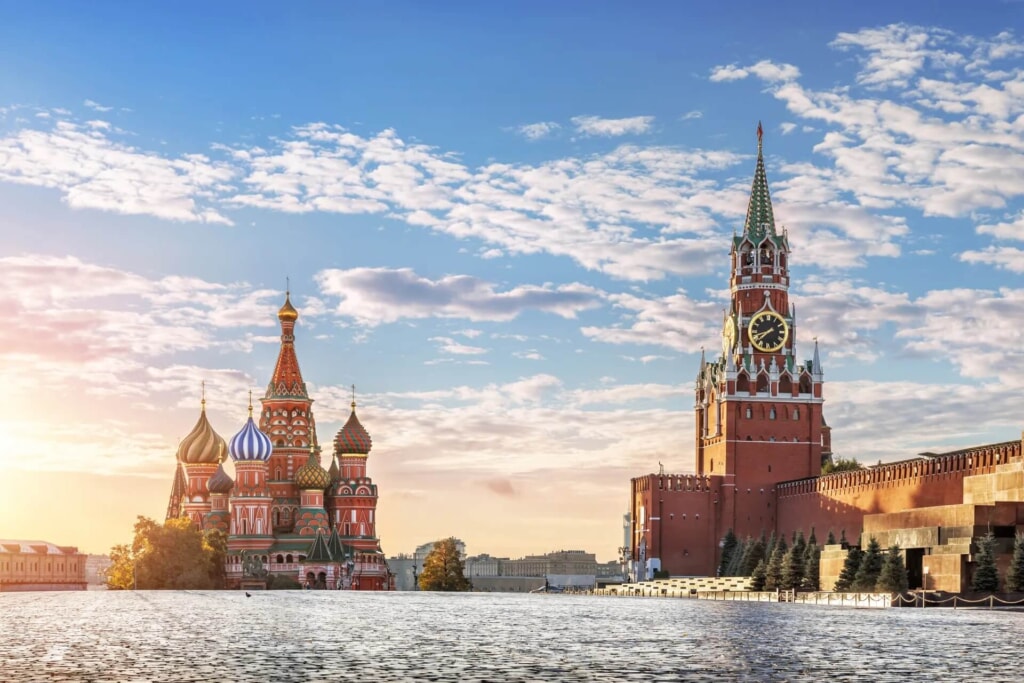
Moscow’s Red Square, Russia
Aside from being linked to the most important historical events in Russia since the 13th century, Moscow's Red Square features a stunning array of Russian Orthodox architecture. Cases in point: the candy-colored domes of St. Basil's Basilica, red-brick facade of the State Historical Museum, and towering spires of the Kremlin.
Inextricably linked to all the most important historical and political events in Russia since the 13th century, the Kremlin (built between the 14th and 17th centuries by outstanding Russian and foreign architects) was the residence of the Great Prince and also a religious centre. At the foot of its ramparts, on Red Square, St Basil's Basilica is one of the most beautiful Russian Orthodox monuments.
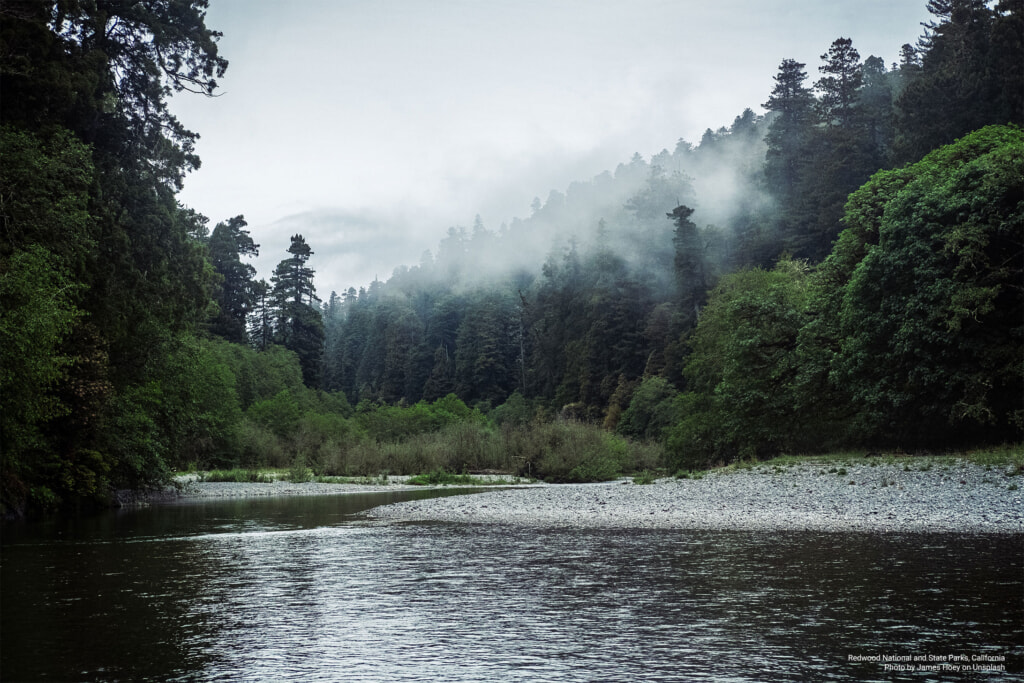
Redwood National and State parks, United States
Some of the tallest and oldest known trees in the world are found in this iconic Northern Californian forest, located on the Pacific coast. Reaching up to 350 feet, the spectacular trees are a link to the past, as the oldest among them date back more than 2,200 years. The Redwood parks are also home to rare wildlife, including bald eagles, Roosevelt elk, and the endangered California brown pelican.
Redwood National Park comprises a region of coastal mountains bordering the Pacific Ocean north of San Francisco. It is covered with a magnificent forest of coastal redwood trees, the tallest and most impressive trees in the world. The marine and land life are equally remarkable, in particular the sea lions, the bald eagle and the endangered California brown pelican.
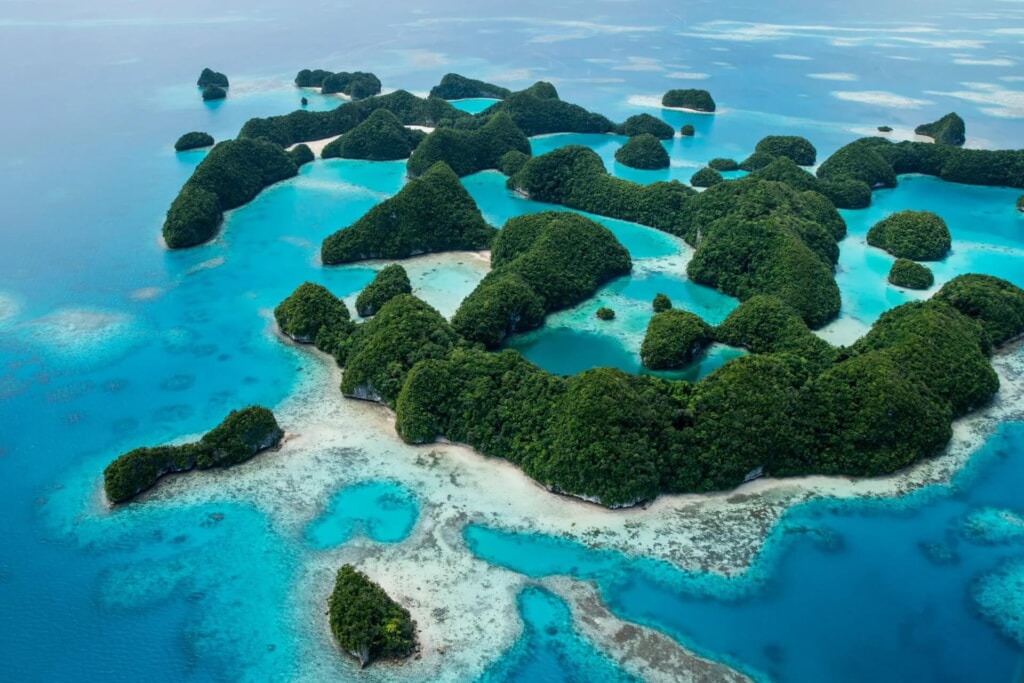
Rock Islands Southern Lagoon, Palau
These mushroom-shaped islands look like a magical, lush garden springing out of Palau's turquoise lagoon. Now uninhabited, the limestone isles were once home to small communities for three millennia—and the ruins of their villages can still be viewed today. But the lagoon's beauty isn't just on the surface: Below the waterline is a complex reef system with more than 385 different species of coral, as well as marine lakes where new species are still being discovered.
Rock Islands Southern Lagoon covers 100,200 ha and includes 445 uninhabited limestone islands of volcanic origin. Many of them display unique mushroom-like shapes in turquoise lagoons surrounded by coral reefs. The aesthetic beauty of the site is heightened by a complex reef system featuring over 385 coral species and different types of habitat. They sustain a large diversity of plants, birds and marine life including dugong and at least thirteen shark species. The site harbours the highest concentration of marine lakes anywhere, isolated bodies of seawater separated from the ocean by land barriers.
They are among the islands’ distinctive features and sustain high endemism of populations which continue to yield new species discoveries. The remains of stonework villages, as well as burial sites and rock art, bear testimony to the organization of small island communities over some three millennia. The abandonment of the villages in the 17th and 18th centuries illustrates the consequences of climate change, population growth and subsistence behaviour on a society living in a marginal marine environment.
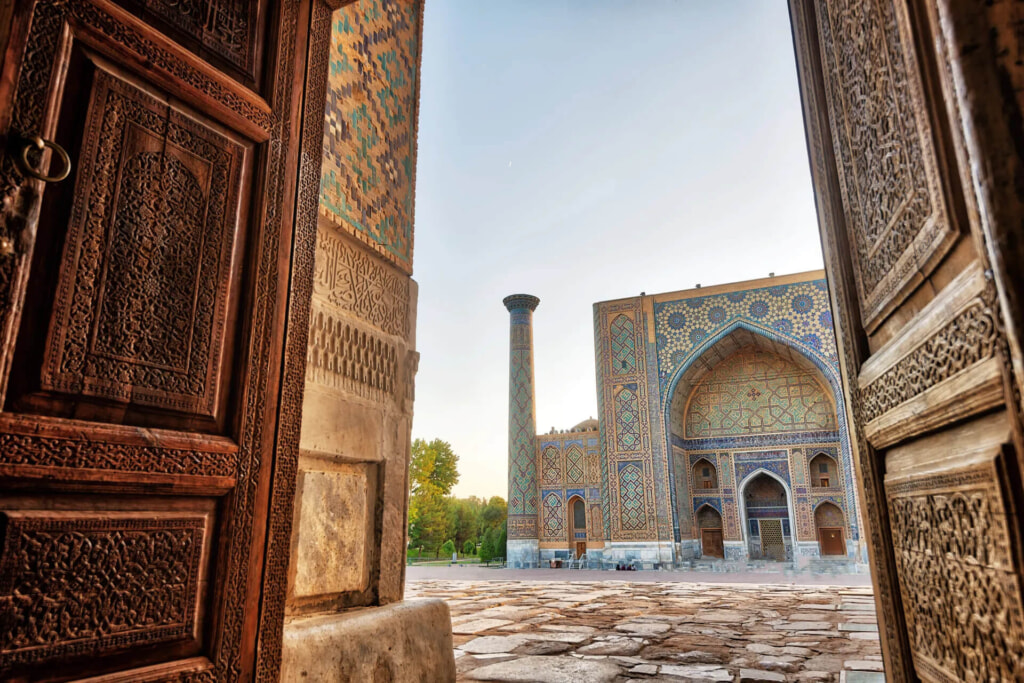
Samarkand, Uzbekistan
Founded in the 7th century B.C., the historic town of Samarkand features such monuments as the Registan Mosque, Bibi-Khanum Mosque, and Ulugh-Beg Observatory—all showcasing the detailed mosaics and Arabic calligraphy that have gone on to define Islamic architecture.
The historic town of Samarkand is a crossroad and melting pot of the world's cultures. Founded in the 7th century B.C. as ancient Afrasiab, Samarkand had its most significant development in the Timurid period from the 14th to the 15th centuries. The major monuments include the Registan Mosque and madrasas, Bibi-Khanum Mosque, the Shakhi-Zinda compound and the Gur-Emir ensemble, as well as Ulugh-Beg's Observatory.
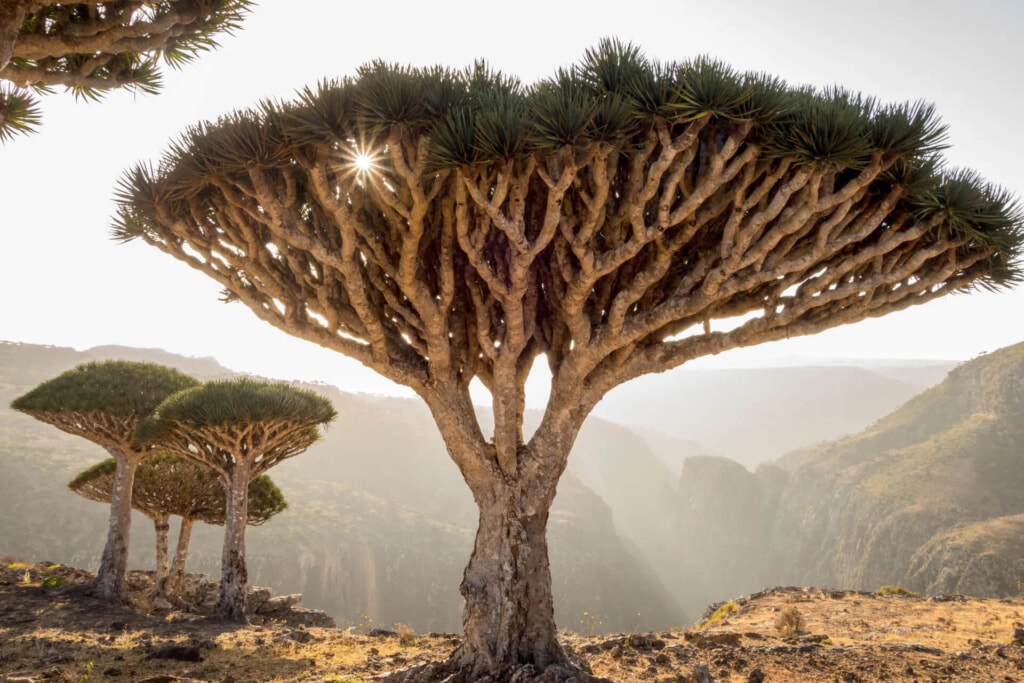
Socotra, Yemen
Nearly 350 miles off the southern coast of Yemen, Socotra has both the remoteness and surrealism of some strange, distant planet. The UFO-like dragon's blood trees are the island's most notable feature—we dare you to find those in your friendly neighborhood park.
Socotra Archipelago, in the northwest Indian Ocean near the Gulf of Aden, is 250 km long and comprises four islands and two rocky islets which appear as a prolongation of the Horn of Africa. The site is of universal importance because of its biodiversity with rich and distinct flora and fauna: 37% of Socotra’s 825 plant species, 90% of its reptile species and 95% of its land snail species do not occur anywhere else in the world. The site also supports globally significant populations of land and sea birds (192 bird species, 44 of which breed on the islands while 85 are regular migrants), including a number of threatened species. The marine life of Socotra is also very diverse, with 253 species of reef-building corals, 730 species of coastal fish and 300 species of crab, lobster and shrimp.
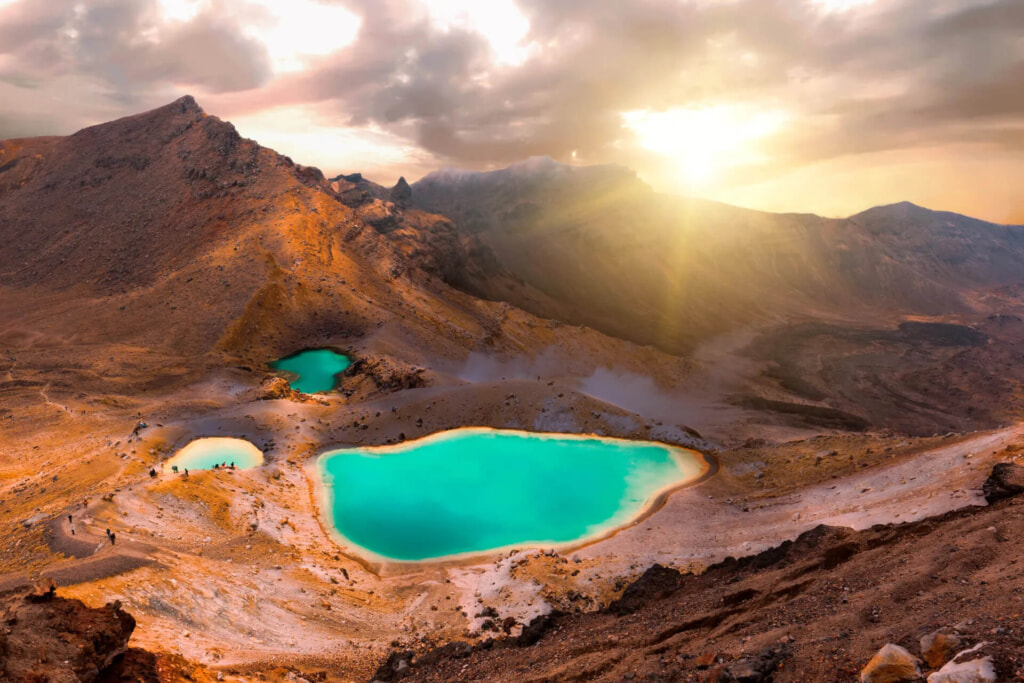
Tongariro National Park, New Zealand
Tongariro National Park on New Zealand’s North Island has earned two UNESCO World Heritage designations (geological and ecological) and is also the oldest national park in the country. Within the park lies the Tongariro Alpine Crossing, a 12-mile hiking route that takes you past the Emerald Lakes of Mt. Tongariro, which get their gorgeous green color from the dissolved volcanic minerals in the water.
In 1993 Tongariro became the first property to be inscribed on the World Heritage List under the revised criteria describing cultural landscapes. The mountains at the heart of the park have cultural and religious significance for the Maori people and symbolize the spiritual links between this community and its environment. The park has active and extinct volcanoes, a diverse range of ecosystems and some spectacular landscapes.
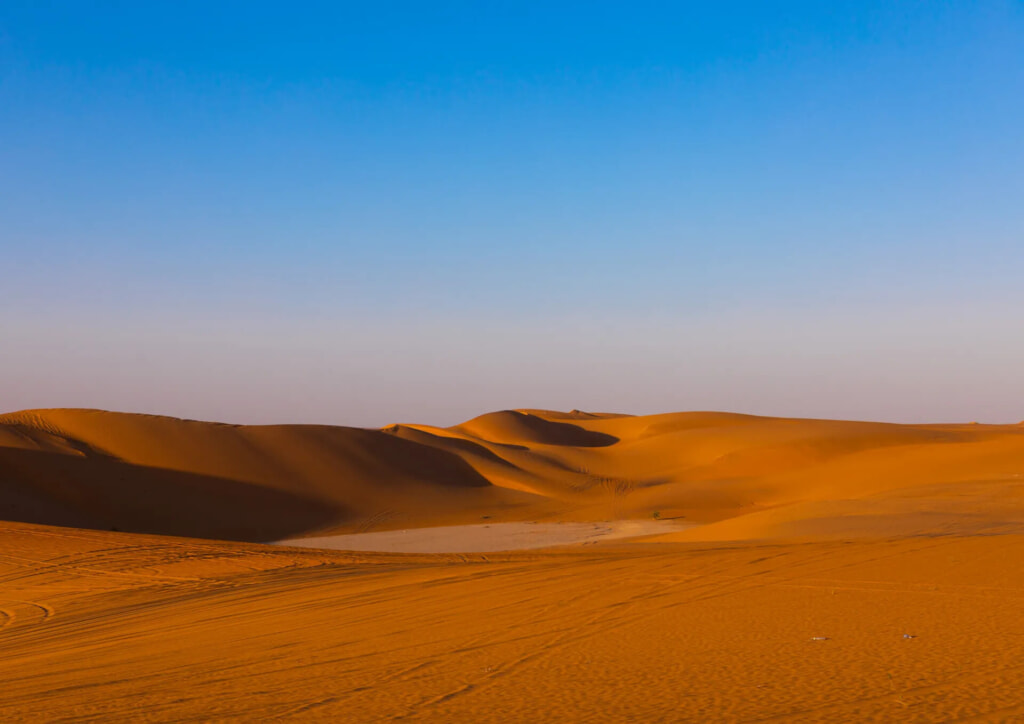
‘Uruq Bani Ma’arid, Saudi Arabia
One look at these tall, undulating dunes and it's not hard to understand why ‘Uruq Bani Ma’arid is sometimes called a sand sea. Located in the western area of Saudi Arabia's Ar-Rub' al-Khali desert, the mounds of reddish sand contrast spectacularly with the blue sky and the endemic wildlife, like the rare Arabian Oryx and its bright white fur. The windblown dunes are constantly shape-shifting, creating ever-changing formations to behold.
The property encompasses the western part of the greatest expanse of windblown sand on Earth, known as Ar Rub' al-KhaIi, and conserves one of the Earth’s most spectacular desert landscapes. The varied topography of the property creates a wide range of wildlife habitats and the site is globally notable due to the reintroduction of iconic desert animals, including the Arabian Oryx (Oryx leucoryx) and Arabian Sand Gazelle (Gazella marica), into their natural habitats after decades of extinction in the wild. The mobile dunes also provide an excellent and well-oxygenated habitat for sand-diving invertebrates and reptiles.
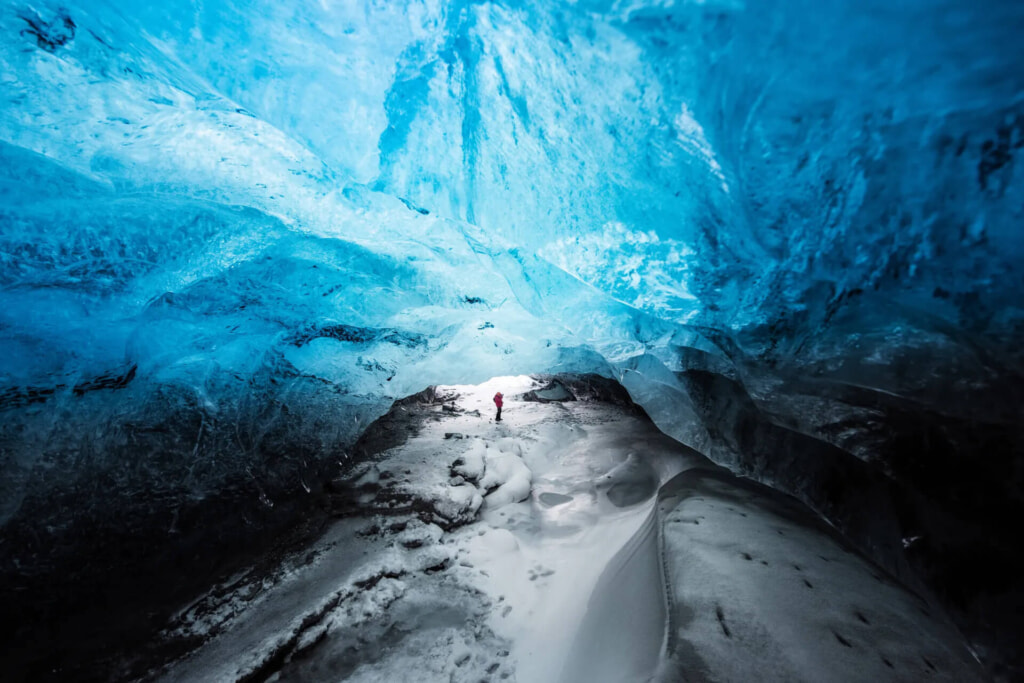
Vatnajökull National Park, Iceland
The numerous subglacial volcanoes found throughout this massive nature reserve are the impetus behind Iceland's nickname, “The Land of Fire and Ice.” The combination of the extreme natural forces of magma and ice caps have created ultra-unique land formations, including blue ice caves, rugged hyaloclastite ridges, and aquamarine calderas.
This iconic volcanic region covers an area of over 1,400,000 ha, nearly 14% of Iceland's territory. It numbers ten central volcanoes, eight of which are subglacial. Two of these are among the most active in Iceland. The interaction between volcanoes and the rifts that underlie the Vatnajökull ice cap takes many forms, the most spectacular of which is the jökulhlaup – a sudden flood caused by the breach of the margin of a glacier during an eruption. This recurrent phenomenon has led to the emergence of unique sandur plains, river systems and rapidly evolving canyons. Volcanic areas are home to endemic groundwater fauna that has survived the Ice Age.
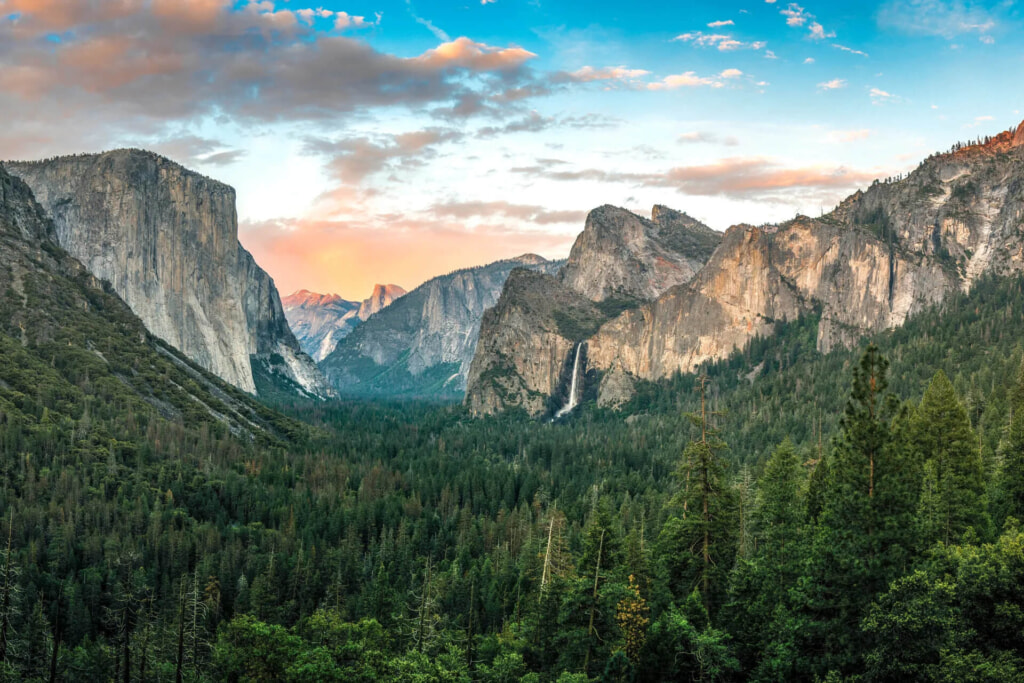
Yosemite National Park, United States
This widely visited national park in California’s Sierra Nevada mountains contains alpine meadows, five of the world's highest waterfalls, giant sequoia groves, and the spectacular, half-mile-deep Yosemite Valley. And all that beauty didn't happen overnight—UNESCO cites glacial erosion over millions of years as the cause for the spectacular park you see today.
Yosemite National Park lies in the heart of California. With its 'hanging' valleys, many waterfalls, cirque lakes, polished domes, moraines and U-shaped valleys, it provides an excellent overview of all kinds of granite relief fashioned by glaciation. At 600–4000 m, a great variety of flora and fauna can also be found here.
Cùng đi với Thiên Xuân Travel và trải nghiệm 39 di sản thế giới của UNESCO!
Thiên Xuân Travel
Park 2, 208 Nguyen Huu Canh Street, Ward 22,
Binh Thanh District, Ho Chi Minh City, Vietnam
📨 booking@thienxuantravel.com
☎️ +84 888 890 898 — 0938 558 228
Office in the United States
14114 Beech Glen Dr, Houston, TX 77083
☎️ +1 (281) 906-2744

